

30,000+ students realised their study abroad dream with us. Take the first step today
Here’s your new year gift, one app for all your, study abroad needs, start your journey, track your progress, grow with the community and so much more.

Verification Code
An OTP has been sent to your registered mobile no. Please verify

Thanks for your comment !
Our team will review it before it's shown to our readers.

इतिहास की बेस्ट पुस्तकें जिन्हें एक बार सबको जरूर पढ़ना चाहिए
- Updated on
- जनवरी 2, 2024
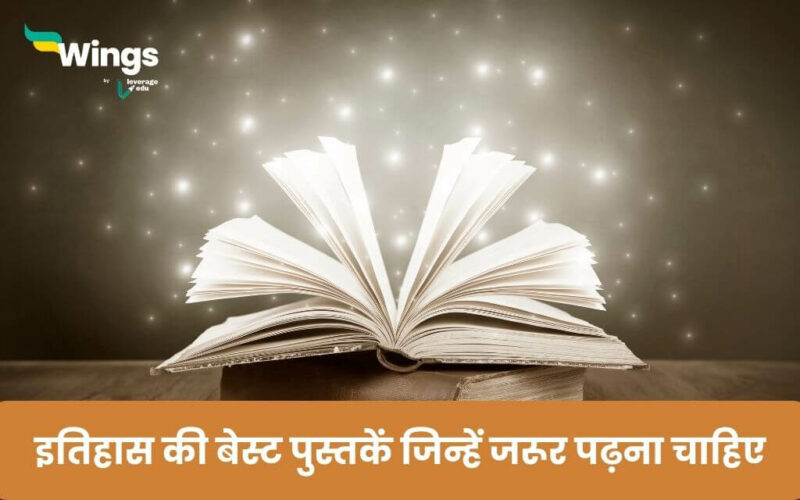
भारत का इतिहास कई वर्ष पुराना और बहुत गौरवशाली है। यहां ऐसी बड़ी-बड़ी घटनाएं घटी है, जिनके बारे में जितनी भी चर्चा करें वे कम हैं। वैसे तो भारत में विदेशी लोगों ने कई सालों तक राज किया, लेकिन मुख्य रूप से भारत में मुगलों के शासन और अंग्रेजों के राज में हुए तमाम हत्याकांड से लेकर अत्याचार और गुलामी की आज भी बात की जाती है। इसी कड़ी में आज हम अपने ब्लॉग के जरिए आपको तमाम History Books in Hindi के बारे में जानकारी देंगे। तो चलिए जानते हैं History Books in Hindi की बेस्ट बुक्स के बारे में।
ज़रूर पढ़ें: Revolt of 1857 (1857 की क्रांति)
This Blog Includes:
भारतीय संस्कृति और आधुनिक जीवन, an entirely new history of india, bharat: gandhi ke baad, hindutva (savarkar), emergency ki inside story, india’s ancient past (भारत का प्राचीन इतिहास), bharat vibhajan, operation blue star ka sach, bharatiya kala evam sanskriti, विश्व इतिहास के लिए टॉप 10 बुक्स, भारतीय इतिहास के लिए टॉप 10 किताबें, प्राचीन इतिहास के लिए टॉप 10 किताबें, मध्यकालीन इतिहास के लिए टॉप 10 किताबें, आधुनिक इतिहास के लिए टॉप 10 किताबें, upsc के लिए इतिहास की टॉप 10 पुस्तकों की लिस्ट, प्रतियोगी परीक्षाओं के लिए इतिहास की टॉप 10 बुक्स.

किताब खरीदने के लिए लिंक – भारतीय संस्कृति और आधुनिक जीवन
भारतीय संस्कृति और आधुनिक जीवन उन्नत तकनीक को शामिल करने के संदर्भ में भारतीय समाज के सामाजिक-सांस्कृतिक अध्ययन और संस्कृति और प्रौद्योगिकी लिपि का एक शानदार उदाहरण है। जबकि भारतीय समाज ने इन सभी नई तकनीकों से निपटने के लिए एक विकसित सामाजिक और सांस्कृतिक ढांचा विकसित किया है, नई तकनीक के कुछ पहलू हैं जो आशंका पैदा कर सकते हैं। प्रौद्योगिकी के लेंस के माध्यम से देखे जाने पर लोगों और उनके वातावरण के बीच इस नाजुक कड़ी के बारे में जानें। कृषि प्रौद्योगिकी से लेकर पशुपालन तक, पुस्तक सभी अनुभवों का विवरण देती है और इन व्यवसायों की वर्तमान स्थिति की तुलना करती है।

किताब खरीदने के लिए लिंक – An Entirely New History of INDIA
भारतीय इतिहास को फिर से जांचने और औपनिवेशिक पूर्वाग्रहों और त्रुटि से मुक्त करने की आवश्यकता है। 6००० साल पुराने ग्रह में ईसाई विश्वास से प्रेरित, ब्रिटिश विद्वान, और उनके भारतीय कर्मचारी, गलत पश्चिमी धारणाओं में फिट होने के लिए भारतीय इतिहास के बाद के इतिहास। अपने स्वयं के एजेंडे के लिए “आर्यन आक्रमण” जैसे सिद्धांतों का निर्माण करता है और सरस्वती नदी के अस्तित्व जैसे विशाल सबूतों को “पौराणिक” के रूप में खारिज कर दिया, भले ही वेदों में पचास से अधिक बार इसका उल्लेख किया गया हो। औपनिवेशिक निगाहों ने गलती से वर्ष 326 ईसा पूर्व में सिकंदर महान द्वारा भारत पर आक्रमण जैसी घटनाओं का भी प्रतिनिधित्व किया और कलिंग की भयानक लड़ाई के बाद “पश्चाताप” के कारण सम्राट अशोक के बौद्ध धर्म में रूपांतरण जैसे मिथकों को गढ़ा, जब अशोक युद्ध के समय पहले से ही एक बौद्ध। इस प्रकार यह पुस्तक नए वैज्ञानिक, भाषाई और आनुवंशिक खोजों सहित नए साक्ष्यों के आधार पर भारतीय इतिहास को फिर से लिखती है। यह क्लिच को खत्म करने, विवादों को स्पष्ट करने और यथासंभव सटीक रूप से, भारतीय इतिहास के सबसे महत्वपूर्ण काल-इतिहास को पहले के विचारों से बहुत पुराना बनाने का प्रयास करता है।

ऐतिहासिक घटनाओं के नकारात्मक मोड़ के अलावा, पुस्तक में उन कई उपलब्धियों को भी दर्ज किया गया है, जो राष्ट्र ने की हैं, जिससे हर भारतीय को गर्व होता है। कई आतंकी हमलों, संघर्षों और विवादास्पद मुद्दों का सामना करने के बाद भी, भारत गणराज्य बच गया है और आजादी के बाद भी एकजुट है। पुस्तक कुछ प्रसिद्ध हस्तियों को उनके व्यक्तिगत और उनके राजनीतिक जीवन का वर्णन करते हुए एक बहुत ही अलग रोशनी में प्रस्तुत करती है। इसके अलावा, गुहा आदिवासियों, श्रमिकों और किसानों में से कुछ कम-ज्ञात व्यक्तित्वों का भी उल्लेख करते हैं जिन्होंने भारत को आज बनाने में प्रमुख भूमिका निभाई है।

किताब खरीदने के लिए लिंक – HINDUTVA (SAVARKAR)
हिंदुत्व’ एक ऐसा शब्द है, जो संपूर्ण मानवजाति के लिए आज भी अपूर्व स्फूर्ति तथा चैतन्य का स्रोत बना हुआ है। इस शब्द से संबद्ध विचार, महान ध्येय, रीति-रिवाज तथा भावनाएँ कितनी विविध तथा श्रेष्ठ हैं। ‘हिंदुत्व’ कोई सामान्य शब्द नहीं है। यह एक परंपरा है। एक इतिहास है। यह इतिहास केवल धार्मिक अथवा आध्यात्मिक इतिहास नहीं है। अनेक बार ‘हिंदुत्व’ शब्द को उसी के समान किसी अन्य शब्द के समतुल्य मानकर बड़ी भूल की जाती है। वैसे यह इतिहास मात्र नहीं है, एक सर्वसंग्रही इतिहास है। ‘हिंदू धर्म’, यह शब्द ‘हिंदुत्व’ से ही उपजा उसी का एक रूप है, उसी का एक अंश है। ‘हिंदुत्व’ शब्द में एक राष्ट्र, हिंदूजाति के अस्तित्व तथा पराक्रम के सम्मिलित होने का बोध होता है। इसीलिए ‘हिंदुत्व’ शब्द का निश्चित आशय ज्ञात करने के लिए पहले हम लोगों को यह समझना आवश्यक है कि ‘हिंदू’ किसे कहते हैं। इस शब्द ने लाखों लोगों के मानस को किस प्रकार प्रभावित किया है तथा समाज के उत्तमोत्तम पुरुषों ने, शूर तथा साहसी वीरों ने इसी नाम के लिए अपनी भक्तिपूर्ण निष्ठा क्यों अर्पित की, इसका रहस्य ज्ञात करना भी आवश्यक है। प्रखर राष्ट्रचिंतक एवं ध्येयनिष्ठ क्रांतिधर्मा वीर सावरकर की लेखनी से निःसृत ‘हिंदुत्व’ को संपूर्णता में परिभाषित करती अत्यंत चिंतनपरक एवं पठनीय पुस्तक है।
ज़रूर पढ़ें: Indian Freedom fighters

किताब खरीदने के लिए लिंक – Emergency Ki Inside Story
इन सबकी शुरुआत उड़ीसा में 1972 में हुए उप-चुनाव से हुई। लाखों रुपए खर्च कर नंदिनी को राज्य की विधानसभा के लिए चुना गया था। गांधीवादी जयप्रकाश नारायण ने भ्रष्टाचार के इस मुद्दे को प्रधानमंत्री के सामने उठाया। उन्होंने बचाव में कहा कि कांग्रेस के पास इतने भी पैसे नहीं कि वह पार्टी दफ्तर चला सके। जब उन्हें सही जवाब नहीं मिला, तब वे इस मुद्दे को देश के बीच ले गए। एक के बाद दूसरी घटना होती चली गई और जे.पी. ने ऐलान किया कि अब जंग जनता और सरकार के बीच है। जनता—जो सरकार से जवाबदेही चाहती थी और सरकार—जो बेदाग निकलने की इच्छुक नहीं थी।’ ख्यातिप्राप्त लेखक कुलदीप नैयर इमरजेंसी के पीछे की सच्ची कहानी बता रहे हैं। क्यों घोषित हुई इमरजेंसी और इसका मतलब क्या था, यह आज भी प्रासंगिक है, क्योंकि तब प्रेरणा की शक्ति भ्रष्टाचार के मुद्दे पर मिली थी और आज भी सबकी जबान पर भ्रष्टाचार का ही मुद्दा है। एक नई प्रस्तावना के साथ लेखक वर्तमान पाठकों को एक बार फिर तथ्य, मिथ्या और सत्य के साथ आसानी से समझ आनेवाली विश्लेषणात्मक शैली में परिचित करा रहे हैं। वह अनकही यातनाओं और मुख्य अधिकारियों के साथ ही उनके काम करने के तरीके से परदा उठाते हैं। भारत के लोकतंत्र में 19 महीने छाई रही अमावस पर रहस्योद्घाटन करनेवाली एक ऐसी पुस्तक, जिसे अवश्य पढ़ना चाहिए।

किताब खरीदने के लिए लिंक – India’s Ancient Past (भारत का प्राचीन इतिहास)
यह पुस्तक भारत के प्राचीन इतिहास का एक विस्तृत और सिलेसिलेवार ब्यौरा प्रस्तुत करती है। पुस्तक में इतिहास लेखन के स्वरूप, महत्त्व, स्रोतों पर भी चर्चा की गई है। यह अपने समय काल में सभ्यताओं के उदय और उनकी स्थितियों का विश्लेषण करती है। यह धर्म और संप्रदायों की निर्मिति, साम्राज्यों के उत्थान और पतन को रेखांकित करती है। पुस्तक, आर्य संस्कृति और उसकी विशेषताओं पर भी चर्चा करती है। सभ्यताओं के उदय की भौगोलिक परिस्थितियां और समुदायों के भाषाई स्वरूप के इतिहास का वर्णन करती है। ऐतिहासिक तौर पर यह नवपाषाण युग, ताम्रयुग और वैदिक काल के साथ-साथ हड़प्पा सभ्यता की विशेषताओं को साक्ष्यों के साथ प्रस्तुत करती है। लेखक ने जैन और बौद्ध धर्म के उद्भव और प्रसार के बारे में भी विस्तार से चर्चा की है। राज्यों के बनने की प्रक्रिया और राज्यों के विस्तार को भी पुस्तक अपने भीतर समेटती है। पुस्तक में मगध और क्षेत्रीय शासकों के उदय से लेकर मौर्य साम्राज्य, सतवाहन, गुप्ता और हर्षवर्धन के शासन काल के विविध आयामों की चर्चा भी की गई है। यह मध्य-एशियाई क्षेत्रों में शासकों के विस्तार और बाहरी संपर्कों के प्रभाव को भी दर्शाती है। लेखक ने ऐतिहासिक स्थितियों में वर्ण-व्यवस्था, नगरीकरण, वाणिज्य और व्यापार के साथ विज्ञान, दर्शन और सांस्कृतिक स्थितियों जैसे महत्वपूर्ण आयामों की चर्चा इस पुस्तक में की है। यह पुस्तक प्राचीन भारत से मध्ययुगीन भारत तक की पूरी प्रक्रिया और कालक्रम को प्रस्तुत करती है।

किताब खरीदने के लिए लिंक – Bharat Vibhajan
स्वतंत्र भारत के प्रथम गृहमंत्री और ‘लौह पुरुष’ की उपाधि प्राप्त सरदार पटेल कांग्रेस के एक प्रमुख सदस्य थे। पूर्ण स्वराज्य प्राप्त करने के उद्देश्य से स्वतंत्रता आदोलन में उन्होंने महत्त्वपूर्ण भूमिका निभाई । उनके संपूर्ण राजनीतिक जीवन में भारत की महानता और एकता ही उनका मार्गदर्शक सितारा रहा। सरदार पटेल दो समुदायों के बीच आंतरिक मतभेद उत्पन्न करके ‘बाँटो और राज करो’ की ब्रिटिश नीति के कट्टर आलोचक थे। भारत की एकता को बनाए रखना उनकी सबसे बड़ी चिंता थी। लॉर्ड माउंटबेटन ने 3 जून, 1947 को अपनी योजना घोषित की। इसमें बँटवारे के सिद्धांत को स्वीकृति दी गई। इस योजना को कांग्रेस और मुसलिम लीग ने स्वीकार किया। सरदार पटेल ने कहा कि उन्होंने विभाजन के लिए सहमति इसलिए दी, क्योंकि वह विश्वसनीय रूप से समझते थे कि ‘(शेष) भारत को संयुक्त रखने के लिए इसे अब विभाजित कर दिया जाना चाहिए। ‘ सरदार पटेल के विस्तृत पत्राचार के आधार पर प्रस्तुत पुस्तक में भारत विभाजन किन परिस्थितियों में और किन-किन कारणों से हुआ, भारतीय नेताओं की मनःस्थिति तथा तत्कालीन समाज की मन:स्थिति का साक्ष्यों के प्रकाश में विस्तृत वर्णन किया गया है । भारत विभाजन के काले अध्याय का सप्रमाण इतिहास वर्णित करती एक महत्त्वपूर्ण पुस्तक।

किताब खरीदने के लिए लिंक – Operation Blue Star Ka Sach
ऑपरेशन ब्लू स्टार संसार की अत्यंत विवादग्रस्त एवं चर्चा का ज्वलंत विषय बनने वाली सैन्य कार्रवाई में से एक है, जो निश्चित ही समकालीन भारतीय इतिहास में एक महत्त्वपूर्ण मोड़ समझी जाएगी। यह पुस्तक उस सैन्य अधिकारी की ओर से प्रस्तुत किया गया विवरण है, जिसने इस कार्रवाई का नेतृत्व किया था। इसमें दिल को छूनेवाले, मर्मांतक, छोटे-छोटे अनेक सूक्ष्म विवरण पेश किए गए हैं। इस पुस्तक में कुछ भी छिपाया नहीं गया है, न उन नाकामयाबियों के बारे में, जिनका सेना को मुझेहाँह देखना पड़ा; न सेना की कमियों को; न उन अतिवादियों की शिद्दत तथा दृढता, जिन्हें बाहर निकालने का काम सेना को सौंपा गया था। अनेक काल्पनिक कहानियों, आलोचनाओं तथा अर्ध-सच्चाइयों का जोरदार खंडन करते हुए इसमें हिम्मत से बहुत सारे ऐसे सवालों के जवाब दिए गए हैं, जो सिर्फ सिखों को ही नहीं, सारे भारतीयों को परेशान करते हैं। लेखक- जो कार्रवाई को योजनाबद्ध करने तथा इसे व्यावहारिक रूप देने के प्रत्येक पड़ाव पर इसमें शामिल रहा—शायद यही एक ऐसा व्यक्ति है, जो सचमुच यह जानता है कि 5 जून, 1984 की अनहोनी भरी रात को ठीक-ठीक क्या घटा। यही इस पुस्तक में वर्णित है। संपूर्ण सच, सच्चाई के अलावा और कुछ भी नहीं।
ज़रूर पढ़ें: जाने क्यों हुआ Civil Disobedience Movement

किताब खरीदने के लिए लिंक – Mopla
खलीफा आन्दोलन के दौरान मालाबार में हुए हिन्दुओं के नरसंहार की वास्तविक घटना पर आधारित एक मार्मिक उपन्यास। इस घटना को जान बूझकर सभी तत्कालीन कांग्रेस एवं अन्य नेताओं यथासंभव यह कहकर दबाने का प्रयास किया कि इसको उजागर करने से सामाजिक सौहार्द बिगड़ेगा। सावरकर जी का कहना है कि दो मुख्य कारण हैं हिन्दू समाज की वर्तमान दशा के – एक है मूर्ति पूजा और दूसरा है छुआ-छूत। जिसके कारण हम अपने समाज की रक्षा नहीं कर पाते हैं। हमारी सम्पति, हमारी स्त्रियों मलेच्छों द्वारा लूटी जाती हैं और हम कुछ नहीं कर पाते।

किताब खरीदने के लिए लिंक – Bharatiya Kala Evam Sanskriti
सबसे ज्यादा बिक्री वाली पुस्तको की सूची में शामिल भारतीय कला एवं संस्कृति नामक तृतीय संस्करण वाली यह संशोधित एवं परिवर्द्धित पुस्तक, जो नितिन सिंघानिया द्वारा लिखी गयी है। यह पुस्तक सिविल सेवा के प्रारंभिक और मुख्य परीक्षा के उम्मीदवारों के लिए भारतीय कला, चित्रकला, संगीत और वास्तुकला पर ज्ञान के व्यापक क्षेत्र को समाविष्ट करते हुए विश्लेषणात्मक और नवीनतम जानकारी प्रदान करती है। दो नए अध्यायों और एक परिशिष्ट के अलावा, अध्यायों को विवरणों के साथ संपन्न बनाया गया है, ताकि इसे अधिक केंद्रित और व्यापक बनाया जा सके। विशेष आकर्षण : . चार भागों यथा दृश्य कला ,प्रदर्शन कला ,भारत की संस्कृति एवं परिशिष्ट में विभाजित . 26 अध्यायों एवं 5 परिशिष्टों में समायोजित यह पुस्तक एक अनूठी संग्रहिका की तरह है, जिसमें भारतीय कला एवं संस्कृति के विभिन्न आयामों के विविध पक्षों के अनछुए पहलुओं का बेजोड़ चित्रण . इस संस्करण में निहित नवीन अध्याय: 1. बौद्ध और जैन धर्म 2. विदेशी यात्रियों की दृष्टि में भारत . सामयिक मुद्दों (करेंट अफेयर्स) पर नया परिशिष्ट . पुस्तक के प्रत्येक अध्याय में अभ्यास हेतु सिविल सेवा की प्रारंभिक एवं मुख्य परीक्षाओं के मॉडल प्रश्नों का संग्रह . पुस्तक के प्रत्येक अध्याय में अभ्यास हेतु सिविल सेवा की प्रारंभिक एवं मुख्य परीक्षाओं के क्रमशः 17 एवं 37 वर्षों के दौरान पूछे गए प्रश्नों का अपार संग्रह . उच्चस्तरीय,विश्वसनीय,प्रभावकारी एवं नवीन सोंच के अनुरूप तथ्यों एवं प्रश्नों की प्रस्तुति ताकि सिविल सेवा की परीक्षा में सफलता के मार्ग आसान हो सके।
हिस्ट्री के लिए बेस्ट 70 किताबों की लिस्ट
History Books in Hindi के लिए बेस्ट 70 किताबों की लिस्ट इस प्रकार है:
- Constitution Of India
- The Last Mughal (2006) – William Dalrymple
- Caste, Class And Power (1965) – Andre Beteille
- Days of Longing (1972) – Krishna Baldev Vaid’s translation of Nirmal Verma’s
- Remembered Village (1976) – M. N. Srinivas
- India After Gandhi (2007) – Ramachandra Guha
- A Fine Balance (1995) – Rohinton Mistry
- Subhasitaratnakosa (1965) – Daniel Ingalls’ translation of Subhasitaratnakosa
- Cuckold (1997) – Kiran Nagarkar
- India Unbound (2000) – Gurcharan Das
- My India (1952) – Jim Corbett
- Taste of India (1985) – Madhur Jaffrey
- Unaccustomed Earth (2008) – Jhumpa Lahiri
- The Flaming Feet (2010) – DR Nagraj
- Siege of Krishnapur (1973) – JG Farrell
- Our films, their films (1994) – Satyajit Ray
- Banaras: City of Light (1982) – Diana Eck
- Light On Yoga (1966) – BKS Iyengar
- Tamil a biography (2016) – David Shulman
- Elementary Aspects of Peasant Insurgency in Colonial India (1999) – Ranajit Guha
- Jungle And Backyard (1961) – M Krishnan.
- My Son’s Father (1968) – Dom Moraes
- Behind The Beautiful Forevers (2013) – Katherine Boo
- Recasting Women (1990) – Kumkum Sangari And Sudesh Vaid, Editors,
- Autobiography of An Unknown Indian (1951) – Nirad Chaudhuri
- The Spirit of Indian Painting (2014) – BN Goswamy
- The Agrarian System of Mughal India (1963) – Irfan Habib
- English August (1988) -Upamanyu Chatterjee
- Sacred Games (2006) – Vikram Chandra
- The God Of Small Things (1997) – Arundhati Roy
- The Wonder That Was India (1954) – Arthur Llewelyn Basham
- A History of India (1990) – Romila Thapar
- Poems of Love and War (2006) – AK Ramanujan’s translation of
- Handbook of the Birds of India and Pakistan (2003) -Salim Ali
- Train To Pakistan (1956) – Khushwant Singh
- Midnight’s Children (1981) – Salman Rushdie
- Socialite Evenings (1989) – Shobhaa De
- My Story (1973) – Kamala Das
- Maximum City (2004) – Suketu Mehta
- In An Antique Land (1993) -Amitav Ghosh
- I Too Had A Love Story (2008) – Ravinder Singh
- Poverty and Famines (1981) – Amartya Sen
- Planning for Industrialization. (1970) – Jagish Bhagwati and Padma Desai
- Room On The Roof (1956) – Ruskin Bond
- Asana Pranayama Mudra Bandha (1969) – Swami Satyananda Saraswati
- In Cstody (1984) – Anita Desai
- Immortals of Meluha (2010) – Amish Tripathi
- Inheritance Of Loss (2006) – Kiran Desai
- An Introduction to the Study of Indian History (1956) – DD Kosambi
- Gitagovinda (1986) – Barbara Stoller Miller’s translation of Jayadeva’s Gitagovinda
- A Suitable Boy (1993) – Vikram Seth
- Politics in India (1970) – Rajni Kothari
- Don’t Lose Your Mind Lose Your Weight (2009) -Rujuta Diwekar
- Jejuri (1976) – Arun Kolatkar
- The Guide (1958) – RK Narayan
- The White Tiger (2008) – Aravind Adiga
- The Idea of India (1997) -Sunil Khilnani
- Women Writing in India: 600 BC to the early 20th century Volume I (1991) -Susie Tharu and K Lalita
- 5 point someone (2004) – Chetan Bhagat
- The Emperor of all Maladies (2010) – Siddharth Mukherjee
- A history and culture of the Indian people (1951) – RC Mazumdar
- Country Without A Post office (1997) – Aga Shahid Ali
- Indian Food: A Historical Companion (1994) – KT Achaya
- India (1990) -VS Naipaul
- Ramayana (1957) + Mahabharat (1951) – Rajagopalachari
- All About H Hatter (1948) – GV Desani
- Being Mortal (2014) – Atul Gawande
- Upanishads (1996)
- Everybody Loves a Good Drought (1996) – P Sainath
- Introduction to Fine Arts – CLASS 11 NCERT
History Books in Hindi के लिए बेस्ट 10 किताबों की लिस्ट इस प्रकार है:
- Grant – By Ron Chernow
- Encounters at the Heart of the World: A History of the Mandan People – By Elizabeth A. Fenn
- Guns, Germs, and Steel: The Fate of Human Societies – By Jack Weatherford
- Genghis Khan and the Making of the Modern World – By Jack Weatherford
- Leningrad: The Epic Siege of World War II, 1941-1944 – By Anna Reid
- Embers of War: The Fall of an Empire and the Making of America’s Vietnam – By Fredrik Logevall
- Rites of Spring: the Great War and the Birth of the Modern Age – By Modris Eksteins
- The History of the Ancient World – By Susan Wise Bauer
- Broken Lives: How Ordinary Germans Experienced the 20th Century -By Konrad H. Jarausch
- Democracy: A Life – By Paul Cartledge
- Discovery of India by Jawaharlal Nehru
- Freedom at Midnight by Dominique Lapierre and Larry Collins
- The Argumentative Indian by Amartya Sen
- India after Gandhi: The History of the World’s Largest Democracy by Ramachandra Guha
- The Wonder That Was India by A L Basham
- The Great Indian Novel by Shashi Tharoor
- A Corner Of A Foreign Field by Ramachandra Guha
- The Last Mughal: The Fall of a Dynasty: Delhi, 1857 by William Dalrymple
- India: A history by John Keay
- Alberuni’s India by Alberuni (Translated by Edward C. Sachau)
- Metamorphoses by Ovid
- On the Nature of Things by Lucretius
- River God by Wilbur Smith
- S.P.Q.R.- A History of Ancient Rome by Mary Beard
- The Conquest of Gaul by Gaius Iulius Caesar
- The Decline and Fall of the Roman Empire by Edward Gibbon
- The Early History of Rome- (The History of Rome, #1-5) by Titus Livy
- The Fall of the Roman Empire- A New History of Rome and the Barbarians by Peter Heather
- The Histories by HerodotusThe Oddyssey of Homer by Homer
- Janet Abu-Lughod, Before European Hegemony: the world system, AD 1250-1350 (1991)
- Robert Bartlett, The Hanged Man. A story of miracle, memory and colonialism in the Middle Ages
- Heinrich Fichtenau, Living in the Tenth Century. Mentalities and Social Orders (1991)
- John Hatcher, The Black Death: an intimate History (2008)
- Rodney Hilton, Medieval Peasant Movements and the English Rising of 1381 (1977)
- Maureen Miller, Clothing The Clergy. Virtue and power in Medieval Europe, 800-1200 (2014)
- R.I. Moore, War on Heresy. Faith and Power in Medieval Europe (2012)
- Eileen Power, Medieval People (1924)
- Jean-Claude Schmitt, Ghosts in the Middle Ages: The Living and Dead in Medieval Society (1999)
- Christopher Tyerman, How to Plan A Crusade. Reason and Religious War in the High middle Ages (2015)
- What Is History? by Edward Hallett Carr
- 1491 by Charles C. Mann
- Precolonial Black Africa by Cheikh Anta Diop
- The Guns of August by Barbara Tuchman
- Parallel Lives by Plutarch
- The Battle for Spain by Antony Beevor
- Daughters of the Samurai: A Journey from East to West and Back by Janice P. Nimura
- The Crusades by Thomas Asbridge
- This Is Your Mind on Plants by Michael Pollan
- The History of the Peloponnesian War by Thcydides
UPSC के लिए टॉप 10 पुस्तकों की लिस्ट नीचे दी गई है-
- A New Look at Modern Indian History From 1707 to the Modern Times- Alka Mehta and B L Grover S
- Mastering Modern World History- Norman Lowe (Best book for World History UPSC)
- The Penguin History Of Early India: From The Origins To AD 1300- Romila Thapar
- Age of Revolution 1789-1848- Eric Hobsbawm
- History of Medieval India- Satish Chandra (Medieval history book for UPSC exam)
- History Of Modern India- Bipan Chandra
- India’s Ancient Past- Ram Sharan Sharma
- Modern Indian History- Bipan Chandra
- Age Of Capital: 1848-1875 (History of Civilization)- Eric Hobsbawm
- Age of Capital -E.J. Hobsbawm
प्रतियोगी परीक्षाओं के लिए इतिहास की टॉप 10 बुक्स इस प्रकार हैं:
1. India’s Ancient Past by R.S. Sharma 2. The Wonder that was India by A.L Basham for Ancient History 3. Early India by Romila Thapar 4. Medieval India by Satish Chandra 5. Advanced Study in the History of Medieval India all the three volumes by J.L Mehta 6. History of Modern India by Bipan Chandra 7. India’s Struggle for Independence: 1857-1947 by Bipan Chandra 8. History of the World by Arjun Dev and Indira Arjun Dev 9. From Plassey to partition: A History of Modern India 10. Ancient and Medieval India by Poonam Dalal Dahiya
उम्मीद है कि इस ब्लॉग से आपको History Books in Hindi के बारे में जानकारी मिली होगी। अगर आप विदेश में पढ़ाई करना चाहते है तो आज ही हमारे Leverage Edu के एक्सपर्ट्स से 1800 572 000 पर कॉल करके 30 मिनट का फ्री सेशन बुक कीजिए।
Team Leverage Edu
प्रातिक्रिया दे जवाब रद्द करें
अगली बार जब मैं टिप्पणी करूँ, तो इस ब्राउज़र में मेरा नाम, ईमेल और वेबसाइट सहेजें।
Contact no. *

Leaving already?
8 Universities with higher ROI than IITs and IIMs
Grab this one-time opportunity to download this ebook
Connect With Us
30,000+ students realised their study abroad dream with us. take the first step today..

Resend OTP in

Need help with?
Study abroad.
UK, Canada, US & More
IELTS, GRE, GMAT & More
Scholarship, Loans & Forex
Country Preference
New Zealand
Which English test are you planning to take?
Which academic test are you planning to take.
Not Sure yet
When are you planning to take the exam?
Already booked my exam slot
Within 2 Months
Want to learn about the test
Which Degree do you wish to pursue?
When do you want to start studying abroad.
September 2024
January 2025
What is your budget to study abroad?

How would you describe this article ?
Please rate this article
We would like to hear more.

Press ESC to close
Or check our popular categories....
भारत का सम्पूर्ण इतिहास 🔥| Complete Indian History in Hindi in 75+Chapters
Indian History in Hindi के इस पृष्ठ में आप पायेंगे भारत का इतिहास ( Indian History in Hindi ) नोट्स, जो कि हिन्दी में हैं जिन्हें हमने 4 भागों में बांटा है, प्राचीन इतिहास, मध्यकालीन इतिहास, आधुनिक भारत और स्वतन्त्रता आंदोलन |
ये सभी विभिन्न प्रतियोगी परीक्षाओं के लिए बेहद उपयोगी हैं, नोट्स को बनाने का मकसद तेजी से रिविज़न के साथ साथ सभी उपयोगी तथ्यों को भी रखना है ताकि कोई भी तथ्य ना छूटे ये इन सभी प्रतियोगी परीक्षाओं के लिए उपयोगी है जैसे – UPSC Exam, UPPSC, SSC CGL, उम्मीद है भारतीय इतिहास ( Indian History in Hindi ) के ये नोट्स आपके लिए उपयोगी साबित होंगे ! कई सारे इतिहास के नोट्स Download के लिए भी उपलब्ध हैं, शीघ्र ही और भी नोट्स उपलब्ध होंगे !
प्राचीन भारत का इतिहास | Ancient History in Hindi
मध्यकालीन इतिहास | medieval history in hindi, आधुनिक भारत का इतिहास | modern history in hindi, स्वाधीनता संग्राम.
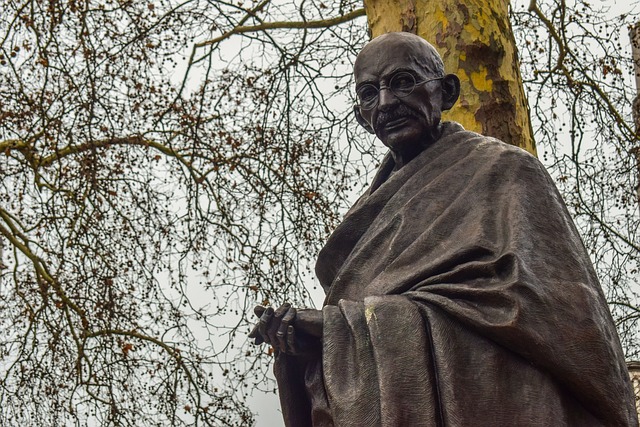
Download PDF Indian History in Hindi
- (56 Facts PDF) प्राचीन इतिहास के सबसे महत्वपूर्ण तथ्य
- NCERT History eBook in Hindi – Download PDF
- प्राचीन इतिहास | Handwritten Notes Hindi PDF Download
इतिहास के महत्वपूर्ण प्रश्न और उत्तर (History in Hindi)

- साहित्यिक स्रोतों से सबसे ज्यादा पूछे जाने वाले 20 सवाल
- क्या 1942 का भारत छोड़ो आंदोलन अहिंसक था ?
- भारत में 19वीं शताब्दी के जनजातीय विद्रोह के क्या कारण थे ?
- जैन दर्शन के अनुसार सृष्टि की रचना एवं पालन पोषण कैसे हुआ है ?
- वैदिक सभ्यता में धर्म और ऋत से क्या तात्पर्य था ?
75+ History Important Questions in Hindi
- कैबिनेट मिशन को प्रधानमंत्री एटली ने भारत कब भेजा ? उत्तर- 19 फरवरी,1946
- बीजक में किसका उपदेश संग्रहित है? उत्तर- कबीर का
- कैपटन हाकिन्स किस मुगल शासक के दरबार में आया था ? उत्तर- जहाँगीर
- भारत आने वाले प्रथम यूरोपीय कौन था? उत्तर- पुर्तगाल
- भारत में रेलवे की शुरुआत कब हुई थी? उत्तर- 1853 ई. में
- भारतीय राष्ट्रीय कांग्रेस की प्रथम महिला अध्यक्षा कौन थीं? उत्तर- एनी बेसेंट
- भारत के संविधान का पिता किसे कहा जाता है? उत्तर- डॉ. बी. आर अम्बेडकर
- प्रसिद्ध विरुपाक्ष मंदिर कहाँ स्थित है? उत्तर- हम्पी में
- सिक्किम भारत का हिस्सा कब बना? उत्तर- 1975 में
- राज्य पुर्नगठन आयोग की स्थापना कब हुआ?उत्तर- 1953 में
- हड़प्पा सभ्यता किस युग की सभ्यता है? उत्तर- कांस्य युग
- सिंधु घाटी के निवासियों को किस धातु का ज्ञान नहीं था? उत्तर– लोहा, note :- उन्हें सोना,चांदी और तांबा धातु का ज्ञान था
- इण्डिका की रचना किसने की? उत्तर- मैगस्थनीज ने
- गुप्तों की काल में कौन चीनी यात्री भारत आया? उत्तर- फाह्यान
- महाभारत की रचना किसने की ? उत्तर- वेद व्यास
- महाभारत का युद्ध कितने दिन चला? उत्तर– 18 दिन तक
- कुरु वंश की राजधानी कहाँ थी ? उत्तर- हस्तिनापुर में
- त्रिपिटक साहित्य संबंधित है? उत्तर– बौद्ध धर्म से
- तृतीय बौद्ध संगीति किसके शासन काल में हुआ? उत्तर- अशोक के समय में
- आईन-ए-अकबरी’ एवं ‘अकबरनामा’ की रचना किसने की? उत्तर-अबुल फजल
- अकबर का वित्तिय मंत्री था? उत्तर- टोडरमल
- पुराणों की संख्या कितनी है?उत्तर- 18
- तम्बाकू का सेवन सबसे पहले किस मुगल सम्राट ने किया? उत्तर-अकबर ने
- पानीपत का प्रथम युद्ध किस वर्ष हुआ था ? उत्तर– 1526 ई. में
- शेख मुइनुद्दीन चिश्ती की दरगाह स्थित है? उत्तर- अजमेर में
- अकबर ने किस वर्ष दिन-ए इलाही धर्म चलाया? उत्तर- 1582 ई.
- स्थापत्य काल का सर्वाधिक विकास किसके काल में हुआ? उत्तर- शाहजहाँ के काल में
- विजयनगर सम्राज्य की स्थापना किसने की? उतर- हरिहर और बुक्का ने
- गोपुरम से आप क्या समझते है? उत्तर- मंदिर का प्रवेश द्वारा
- हम्पी नगर किस राज्य से संबंधित है? उत्तर- विजयनगर
- विजयनगर के शासको ने अपने आप को कहा? उत्तर– राय
- तकवन्दी (ननकाना साहिब) किसका जन्म स्थान हैं? उत्तर– नानक का
- उत्तर भारत में भक्ति आंदोलन का आरम्भ किस संत ने शुरू किया?उत्तर- रामानंद
- भारतीय राष्ट्रीय कॉंग्रेस की स्थापना कब हुई? उत्तर- 1885 में
- राबिया कौन-सी संत थी उत्तर- रहस्यवादी
- इब्नबतूता की देश का यात्री था? उत्तर– मोरक्को
- अलबरुद्दीन किसके साथ भारत आया था ? उत्तर- महमूद गजनी
- संथाल विद्रोह का नेता था? उत्तर- सिंद्धु और कान्हू
- दामिन-ए-कोह क्या था?उत्तर– भू-भाग
- स्थायी बंदोबस्त कहा लागू किया गया? उत्तर-बंगाल में
- इंग्लिश ईस्ट इंडिया कंपनी की स्थापना कब हुई?उत्तर- 1600 ई.में
- स्थायी बंदोबस्त किससे संबंधित है? उत्तर– वेलेजली
- संथाल विद्रह कब हुआ था ? उत्तर- 1855 में
- व्यपगत के सिंद्धांत का सम्बन्ध किससे है? उत्तर-लार्ड डलहौजी
- 1857 की क्रांति आरम्भ हुई? उत्तर- 10 मई,1857 से
- बिहार में 1857 की क्रांति का नेता कौन था? उत्तर- कुंवर सिंह
- कलकत्ता में अंग्रेजों की किलेबंद बस्ती का नाम था?उत्तर-फोर्ड विलियन
- गेट वे ऑफ इंडिया का निर्माण कब हुआ? उत्तर-1911 ई. में
- दिल्ली चलो का नारा किसने दिया? उत्तर- सुभाषचन्द्र बोस
- जलियांवाला बाग हत्या कांड कब हुआ? उत्तर- 1919 में
- काला कानून किसे कहा गया ? उत्तर- रोलट एक्ट को
- द्वितीय विश्व युद्ध की घोषणा कब हुई और किसने की? उत्तर-3 सितम्बर,1939 में ब्रिटेन ने जर्मनी के विरुद्ध युद्ध की घोषणा की
- संविधान सभा की पहली बैठक कब हुई?उत्तर- 9 दिसम्बर,1946 को
- भारतीय संविधान सभा पर हस्ताक्षर कब हुआ?उत्तर- 24 जनवरी,1950 को
- 1917 में रूस में समाजवादी राज्य की स्थापना किसने की? उत्तर- लेलिन ने की
- भारत का प्रथम गृह मंत्री कौन था? उत्तर- सरदार बल्लभ भाई पटेल
- सीमान्त गांधी के नाम से किसे जाना जाता है?उत्तर- ख़ान अब्दुल गफ्फार खाँ को सीमान्त गांधी के नाम से जाना जाता है
- कश्मीर के भारत में विलय पत्र पर किसने हस्ताक्षर किया था? उत्तर- राजा हरीसिंह
- राज्यो से पुनर्गठन आयोग के अश्याक्ष कौन था?उत्तर- न्यामूर्ति फजल अली
- हड़प्पा किस नदी के किनारे स्थित है? उत्तर– रावी नदी के किनारे
- कालीबंगान स्थिति है? उत्तर- राजस्थान में
- पूना समझौता किस वर्ष हुआ? उत्तर- 1932 ई. में
- बिहार में चंपारण सत्या ग्रह कब हुआ? उत्तर- 1917 ई. में
- डांडी किस राज्य में स्थित है? उत्तर- गुजरात में
- 1920 ई. में कौन-सा आंदोलन हुआ? उत्तर- असहयोग आंदोलन
- स्वतंत्र भारत के अंतिम गवर्न जनरल कौन था?उत्तर-सी.राजगोपालाचारी
- मुस्लिम लीग की स्थापना किस वर्ष हुई? उत्तर- 1906 में
- भारतीय स्वतंत्रता अधिनियम कब पारित हुआ? उत्तर- 18 जुलाई 1947 को
- भारतीय संविधान के अनुसार सम्प्रभुता निहित है?उत्तर- राष्ट्रपति में
- भारतीय पुरातत्व के पिता किसे कहा जाता है? उत्तर- अलेक्जेंडर कनिघम
- यूरोप का समुंद्र गुप्त कौन था? उत्तर- नेपोलियन
- दिल्ली से दौलताबाद किस शासक ने अपनी राजधानी परिवर्तित की ?उत्तर- मुहम्मद तुगलक
- विजयनगर सम्राज्य द्वारा असैनिक और सैनिक सेवा के लिए दिया जाने वाला भूमिदान की कहलाता है? उत्तर– अमरभ
नेहरू के निर्धन के बाद उनका राजनीतिक उत्तराधिकारी कों बना?उत्तर- लालबहादुर शास्त्री
भारत में आपातकाल कब लगाया गयाउत्तर- 25 जून,1975 को, भारत में संविधान के किस अनुच्छेद के तहत वित्तिय आपातकाल लगाया गयाउत्तर- अध्यादेश-360, भारतीय इतिहास की शुरुआत कब हुई.
भारत का इतिहास कई सहस्र वर्ष पुराना माना जाता है । 65,000 साल पहले, पहले आधुनिक मनुष्य, या होमो सेपियन्स, अफ्रीका से भारतीय उपमहाद्वीप में पहुँचे थे, जहाँ वे पहले विकसित हुए थे। सबसे पुराना ज्ञात आधुनिक मानव आज से लगभग 30,000 वर्ष पहले दक्षिण एशिया में रहता है।
भारत का इतिहास कितने प्रकार का है?
प्राचीन इतिहास, मध्यकालीन इतिहास, आधुनिक भारत और स्वतन्त्रता आंदोलन
Sources – Wikipedia
- हमारा टेलीग्राम चैनल Join करें !
- हमारा YouTube Channel, StudMo Subscribe करें !
18 Comments
Yah post competitive exam ki preparation karne walo ke liye bahut helful hai…
Thanks for the information sir
Verry good tripst by study center
Sir ji apne jo topic select kiye hai wo elsare reet me available hai isliye… NCERT ki aisi koi Book jisme prachin Bharat, Madhyakalin bharat,nd aadhunik bharat ki Book ya fir PDF Hindi medium me ho to PLZZ send me sir ji…. Or tino ki NCERT me Alag alag book milti ho to muje jarur bataye 🙏🙏
Indian history
Nice Post of history INDIA
Sir ji apne jo topic select kiye hai wo elsare reet me available hai isliye… NCERT ki aisi koi Book jisme prachin Bharat, Madhyakalin bharat,nd aadhunik bharat ki Book ya fir PDF Hindi medium me ho to PLZZ send me sir ji…. Or tino ki NCERT me Alag alag book milti ho to muje jarur bataye 🙏🙏
Sir ji apne dehli sultanet or bahmni A-Z topic send karo
Nice to meet you sir
Nice post history 👍❤sir
Leave a Reply
Save my name, email, and website in this browser for the next time I comment.

Can't find what you're looking for? Ask for help .
1 ? 's' : ''}`">
7 best indian history books in hindi – भारतीय इतिहास [2024], ghanshyam jadhav.
![book review history in hindi 7 Best Indian History Books in Hindi – भारतीय इतिहास [2024]](https://storage.googleapis.com/cdn.konigle.net/blogs/1703563868/202401/best-indian-history-books-hindi-cover.png?v=1706852298)
आज हम 7 Best Indian History Books in Hindi में देखने वाले है। इन किताबो से आपको भारत के इतिहास के बारे में बहुत सारी जानकरी मिलाने वाली है। इसके जो लेखक है वह इतिहास की बारीकियां लोगो के सामने रखना चाहते है जिसके कारण उन्होंने इन indian history किताबो का निर्माण किया। यह किताबे विद्यार्धी से लेकर जिन्हे इतिहास पढ़ना अच्छा लगता है उन सबके लिए है। जो विद्यार्थी सिविल सेवा की तैयारी कर रहा है उनके लिए भी यह महत्वपूर्ण किताबे है।
7 Best Indian History Books in Hindi में कोनसी है?
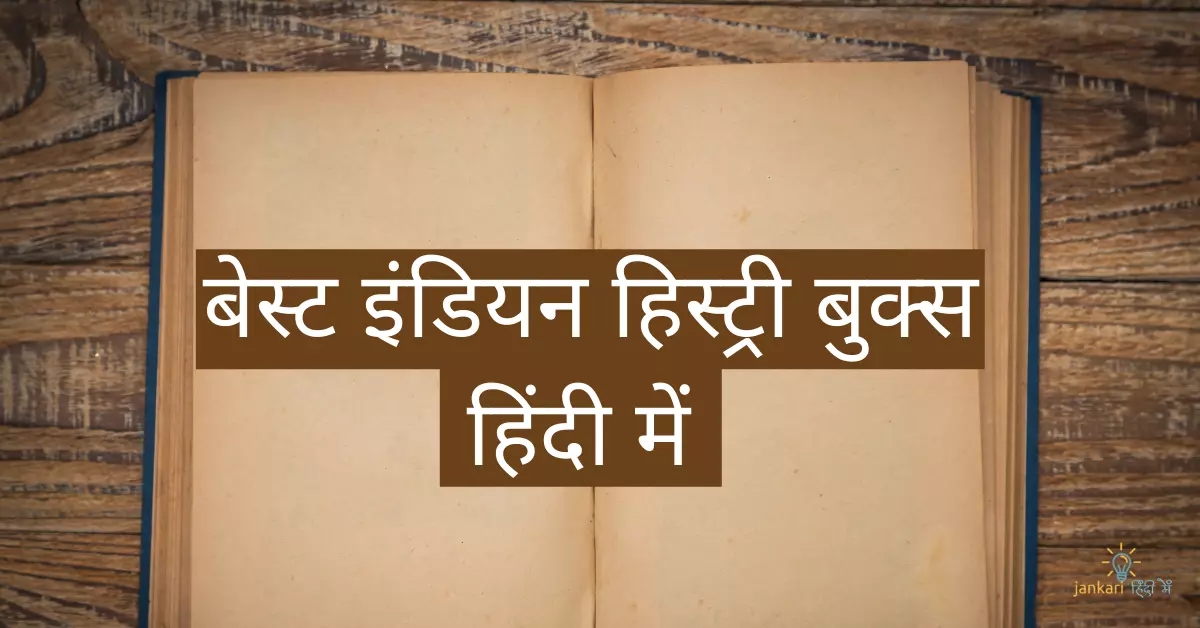
- भारत का प्राचीन इतिहास
- भारत गांधी के बाद
- मुगल कालीन भारत
- भारत की राज्य व्यवस्था
- भारत एक खोज
1. भारत का प्राचीन इतिहास
लेखक: राम शरण शर्मा
यह किताब भारत प्राचीन इतिहास के बारे में पढ़ने के लिए बहुत अच्छी श्रेणी की किताब है। लेखक ने किताब को बहुत ही सरल भाषा में लिखा है यह किताब मार्केट में इंग्लिश और हिंदी दोनों भाषा में उपलब्ध है।
किताब के बारे में:
भारत का प्राचीन इतिहास इस किताब में कुल 33 Chapters है। यह किताब भारत के प्राचीन इतिहास का एक विस्तृत विश्लेषण बहुत ही सरल भाषा में करती है। धर्म और संप्रदायों की निर्मिती, साम्राज्य के स्थान और पतन के बारे में इसमें बताया गया है। लेखक ने बौद्ध और जैन धर्म के शुरुआत एवं प्रसार के बारे में विस्तृत विश्लेषण किया है।
प्राचीन भारत के काल में सभ्यताओं के उदय और उनकी स्तिथियो का विस्तृत जानकारी लेखक ने पुस्तक में दी है। ऐतिहासिक तौर पर यह नवपाषाण युग, ताम्र युग और वैदिक काल के साथ-साथ हड़प्पा संस्कृति की विशेषताओं को प्रमाणों के साथ प्रस्तुत किया है।
लेखक ने इस पुस्तक में मगध और क्षेत्रीय शासकों के उदय से लेकर मौर्य साम्राज्य सतवाहन गुप्ता और हर्षवर्धन के शासनकाल के विविध कलाशेत्र राजकारण के बारे में चर्चा की है।
यह किताब भारत से लेकर मध्ययुगीन भारत की पूरी प्रक्रिया विस्तृत करती है। लेखक ने वर्ण, व्यवस्था, नगरीकरण, वाणिज्य और व्यापार के साथ विज्ञान, सांस्कृतिक स्थिति इन जैसे मुद्दों पर चर्चा की है। इतिहास में रुचि रखने वाले शिक्षकों, पाठकों के लिए यह किताब महत्वपूर्ण है।
2. भारत गांधी के बाद
लेखक: रामचंद्र गुहा
भारत गांधी के बाद यह किताब को बहुत सारे Awards मिले हैं। द इकोनॉमिस्ट, वॉल स्ट्रीट, जनरल वॉशिंटन, टाइम आउट और आउटलुक में इसे बुक ऑफ ईयर के Award से नवाजा है।
इस किताब में मुख्य रूप में आजादी के बाद की भारत में हर गतिविधियों के और इतिहास के बारे में लिखा गया है। किताब के आरंभ के chapters में भारत का विभाजन और आजादी इस topic से शुरू होता है। इसके Chapters में हिंदू, मुस्लिम, दलित, शरणार्थी संविधान निर्माण, विभाजन इसके बारे में विश्लेषण किया है।
यह पुस्तक तीन भागों में विभाजित किया है।
पहले भाग में-
- आजादी व राष्ट्रपिता की हत्या
- विभाजन का तर्क
- टोकरी में सेब
- एक रक्तरंजित हसीन वादी
- शरणार्थी समस्या और गणराज्य
- एक नार भारत की परिकल्पना
दूसरे भाग में–
- इतिहास का सबसे बड़ा दाव
- राष्ट्र व विश्व
- देश का पुनर्गठन
- प्रकृति पर विजय
- कानून व इसके निर्माता
- कश्मीर की रक्षा
- आदिवासी समस्या
तीसरे भाग में-
- दक्षिण से चुनौती
- पराजय का अनुभव
- शांति का प्रयास
- अल्पसंख्यक व दलित
सबसे बड़ी बात यह है की इस किताब में चित्रों का भी प्रयोग किया है। आजादी के बाद की इतिहास की जानकारी लेने के लिए यह किताब बहुत अच्छी हैं। जो पाठक इतिहास में रुचि रखते हैं उन्हें यह बुक अवश्य पढ़नी चाहिए।
इसे ख़रीदे:
3. मुगल कालीन भारत
लेखक: आशीर्वादीलाल श्रीवास्तव
मुगल कालीन भारत यह किताब बाबर के भारत के इतिहास से संबंधित है। बाबर ने जब काबुल की विजय हासिल की उसके बाद उसका भारत से संपर्क हो गया था। भाग ‘अ’ में पूरे बाबरनामा का अनुवाद प्रस्तुत किया है। भाग ‘ब’ में बाबर के व्यक्तिमत्व के बारे में बताया है। भाग ‘ब’ के अनुवाद में ‘नफायसुल मअसीर’ ‘अकबरनामा’तथा तबकाते अकबरी के बाबर के संबंधित अनुवाद प्रस्तुत किया है।
इस किताब में मुख्य साहित्यिक स्त्रोत ग्रंथ और उसका महत्व, मुगल अफगान संघर्ष और मुगल साम्राज्य की स्थापना के बारे में विस्तृत विवरण किया है।
इसवी सन १५२६-१५३० के दौरान बाबर का राज भारत में था। उसके बाद इसवी सन १५३०-१५५६ मे हिमायू ने राज किया। उस दौरान हुई राजनीतिक लड़ाई के बारे में लेखक ने chapter 2 और 3 में ही लिखा है।
मुगल साम्राज्य के विघटन और पतन के कारणों को लिखित में विस्तृत ब्योरा दिया है। इस किताब में शेरशाह सुर और उसके उत्तराधिकारी जिन्होंने मुगल साम्राज्य का विस्तार किया उसके बारे में बड़े ही रोमांचक ढंग से लिखा गया है। औरंगजेब, जहांगीर, अकबर जैसे मुगल बादशाहों के बारे में Chapter 5 से 8 में पढ़ने को मिलता है।
18 वीं सदी के मुख्य राज्यों और मराठा ने किया गया स्वतंत्र संग्राम उसके बारे में किताब के अंतिम Chapter में वर्णन किया गया है। मराठा के आने के बाद मुगलों का शासन व्यवस्था में हुआ विघटन और निवेश के बारे में बहुत ही रोचक स्वरूप से वर्णन किया है। अंत में मुगल साम्राज्य की सफलता और असफलता के बारे में जानकारी है।
4. भारत की राज्य व्यवस्था
लेखक: एम.लक्ष्मीकांत
भारत की राज्य व्यवस्था यह किताब सिविल सेवा की तैयारी करने वाले विद्यार्थी और अन्य राज्यों की परीक्षा के विद्यार्थियों द्वारा पढ़ी जाने वाली किताब है। इस किताब में लेखक जी ने यूपीएससी और सभी State USC के Syallabus के अनुसार Chapters को तैयार किया है। इस किताब में पर्याप्त मात्रा में परीक्षा को मध्य नजर रखते हुए अभ्यास के प्रश्नों को Include किया है।
हर चैप्टर के शुरुआत में कुछ चैप्टर के बारे में जानकारी पहले ही दी है। इस किताब की भाषा सरल और व्यवहारिक है। इस किताब में ओर ६ नए अध्याय शामिल किए हैं।
वह इस प्रकार:-
- वस्तु एवं सेवा कर परिषद
- राष्ट्रीय पिछड़ा वर्ग आयोग
- राष्ट्रीय अन्वेषण अभिकरण
- राष्ट्रीय आपदा प्रबंधन
- क्षेत्रीय दलों की कार्यप्रणाली
- साझा/ गठबंधन सरकार
इस किताब के सकारात्मक मुद्दे:
- 80 अध्याय एवं 16 परिशिष्टों को समाविष्ट करते हुए भारतीय राजव्यवस्था एवं संविधानिक क्रिया कल्पना का पूर्ण विवेचन
- परीक्षा के अध्ययन पाठ्यक्रम के अनुसार अध्याय का पूर्ण व्यवस्थापन
- सिविल सेवा विधि राजनीतिक विज्ञान तथा लोक प्रशासन के विद्यार्थियों हेतु बहुत अच्छी किताब
- 6 नए अध्याय
5. भारत की खोज
लेखक: पंडित नेहरू
भारत की खोज एक प्रसिद्ध किताब है जो कि पंडित नेहरू जी ने लिखी है। पंडित नेहरू जी ने यह किताब जेल में अप्रैल सितंबर १९४४ मैं लिखी थी। प्रारंभ यह किताब अंग्रेजी में था उसके बाद इसका अनुवाद हिंदी में किया गया।
पंडित नेहरू जी ने यह किताब अपने 5 महीनों के कारावास के दौरान दिखाया लिखा था। इस किताब में भारतीय स्वतंत्रता आंदोलन के दौरान का विवरण किया है। सिंधु घाटी सभ्यता से लेकर भारत के आजादी के लिए किए गए संघर्ष, आंदोलन की जानकारी किताब में देखने को मिलती है।
इस पुस्तक पर एक धारावाहिक भी आई थी जो कि दूरदर्शन चैनल पर Broadcast की थी।
लेखक: विश्वास पाटिल
पानीपत यह मराठी किताब है जिसे लेखक विश्वास पाटिल ने लिखा है जिसके बाद इसका अनुवाद हिंदी के साथ-साथ अन्य भाषाओं में किया गया है।
पानीपत भारत में हुए सबसे बड़े युद्ध में से एक है। सन १७६१ में हुआ पानीपत का तीसरा युद्ध लेखकों का बड़ा ही पसंदीदा और कुतूहल का विषय है। भारतीय साहित्य का एक ऐतिहासिक महत्व पानीपत की यह किताब है। पानीपत में कुल 3 महत्वपूर्ण युद्ध हुए थे।यह युद्ध मराठा और मुगलों के बीच हुआ था। इस युद्ध को मुगलों और मराठों में हुआ पहिला बहुत बड़ा युद्ध कहा जाता है।
मराठों के पेशवा नाना साहेब जी ने उनके भाई की बहुत बड़ी सेना टुकड़ी को उत्तर भारत की ओर भेजा था। उन्होंने सैनिक की एक विशाल टुकड़ी उत्तर भारत में अपना शासन प्रस्तावित करने के लिए भेजी थी। उन्होंने पूरे भारत पर कब्जा करना शुरू किया।
मराठों को काबू करने के लिए मोहसिन और नाजिम खान ने अफगानिस्तान के बादशाह को बुला लिया तब जो युद्ध पानीपत में हुआ उसी के बारे में यह किताब है। लेखक जी ने बड़े ही रोचक ढंग से ऐतिहासिक शब्दों का इस्तेमाल करते हैं इतिहास का वर्णन किया है।
इस किताब की प्रसिद्धि के कारण लेखक विश्वास पाटील प्रसिद्धी के शिखर पर पहुंचे थे। पानीपत में हुए सभी घटनाओं का विस्तृत वर्णन इस किताब में आपको देखने को मिलता है।
7. राजतरंगिणी
लेखक: कल्हण
यह एक संस्कृत ग्रंथ है। इसकी रचना ११४८-११५० के बीच हुई है। कश्मीर में इतिहास पर आधारित यह ग्रंथ है। इस किताब में लेखक जी ने ऐतिहासिक घटनाओं के बारे में क्रमश इतिहास लिखने की कोशिश की है। ११५१ आरंभ तक के कश्मीर के प्रत्येक शासकों के बारे में तब हुए घटनाओं के बारे में विस्तृत विवरण ग्रंथ में मिलता है।
प्रारंभ के गदयो में यद्यपि पुराणों के ढंग का विवरण मिलता है। राजतरंगिणी ग्रंथों में कुल 8 तरंग और 8000 श्लोक हैं। प्राचीन कश्मीर के इतिहास के बारे में पहले तीन तरंग में मिलती है। काकोर्ट वंश के बारे में 4 से लेकर 6 तरंग में मिलता है।
लोहार वंश और इतिहास का वर्णन सातवीं और आठवीं तरंग में है। राजा महाराजाओं का गुण दोष का उल्लेख लेखक जी ने बिना कोई पक्षपात से लिखा है। कल्हण जी ने इस ग्रंथ का निर्माण ईसवी सन ११४७ से ११४९ के बीच किया था।
लेखक के समय में कश्मीर बहुत सारी उत्तल पुथल राजनीतिक अस्थिरता से गुजर रहा था तब का इतिहास लेखक जी ने ऐतिहासिक ढंग से ग्रंथ में प्रस्तुत किया है।
राजतरंगिणी यह ग्रंथ ऐतिहासिक महाकाव्य का मुकुटमणि कहा जा सकता है। कल्हण जी एक कश्मीरी कवि भी थे। राजा हर्ष के उत्थान और पतन का विशाल विवरण इस ग्रंथ में मिलता है वह अध्याय भारत के इतिहास का महत्वपूर्ण इतिहास माना गया है।
इसे पढ़े: बेस्ट लव स्टोरी बुक्स इन हिंदी
यह किताबे भारत के इतिहास का एक महत्वपूर्ण हिस्सा है जिसे लेखकों ने बड़े सरलतासे आपके सामने पेश किया है। आज आपने 7 Best Indian History Books in Hindi में देखे। मुझे उम्मीद है की आप इन्हे जरूर खरीदकर पढ़ना चाहेंगे लेकिन अगर आपको इसे खरीदने में दिक़्क़त आती है या किसी प्रकार का सवाल आपके मन में है तो आप हमसे पूछ सकते है।
मेरा नाम घनश्याम जाधव है और मै मुंबई, महाराष्ट्र में रहता हु। मैने मुंबई यूनिवर्सिटी से B.E Computer Science की पढाई पूरी की है इसके अलावा में एक Certified वेब डेवलपर भी हु। मुझे नयी technology साथ ही नयी जानकारी सीखना और दुसरो को बताना बहुत ही पसंद है इसीलिए मैंने इस ब्लॉग की शुरुवात की है।
Don't have an account? We will create one for you.
Enter the OTP send to
Resend OTP in seconds.

History Books In Hindi- इतिहास की सबसे अच्छी 15 किताबें.
Last updated on October 18th, 2022 at 03:53 am
History Books In Hindi:-
प्रत्येक व्यक्ति को अपना गौरवशाली इतिहास जरूर जानना चाहिए ताकि हम अपनी संस्कृती, इतिहास, रहन सहन का तरीका और अपने पूर्वजों के बारे में जान सके. इतिहास को जानने का मुख्य स्त्रोत किताबे होती हैं लेकिन यह एक मुश्किल काम है कि वो कौनसी अच्छी किताबें हैं जो हमारे स्वर्णिम और गौरवशाली इतिहास की सही एवम् सटीक जानकारी प्रदान करती हैं. हिंदी में इतिहास की बेस्ट किताबें (History Books In Hindi) ढूंढना थोड़ा मुश्किल होता हैं अतः आपकी इस समस्या का समाधान करने के लिए हम उन ऐतिहासिक किताबों के बारे में जानकारी देने जा रहे हैं जो निश्चित तौर पर आपके लिए मील का पत्थर साबित होगी.
“History Books In Hindi” कि जिन महत्त्वपूर्ण किताबों के बारे में हम चर्चा करेंगे वो पाषाण काल से लेकर आधुनिक भारत का इतिहास बताती हैं.
मानव उत्पति पर आधारित History Books In Hindi-
मानव जीवन की उत्पति को लेकर तरह तरह के कयास लगाए जाते हैं लेकिन यदि आप मानव उत्पति पर आधारित History Books In Hindi कि खोज में हैं तो आपको निम्नलिखित किताबों को जरूर पढ़ना चाहिए-
[1] वैदिक विश्व राष्ट्र का इतिहास
“वैदिक विश्व राष्ट्र का इतिहास” नामक पुस्तक के लेखक पुरुषोत्तम नागेश ओक हैं. यह पुस्तक मानव उत्पति और हमारी अतिप्राचीन संस्कृती का बहुत ही सुंदर व्याख्यान करती हैं. इस पुस्तक में जो ऐतिहासिक स्त्रोत और तर्क दिए गए हैं वह बहुत ही सटीक और सत्यता के निकट है. इस किताब को पढ़ने के बाद इतिहास के संबंध में आपके कई संशय दूर हो जाएंगे.
आधुनिक इतिहासकार इतिहास को 5000 वर्ष पूर्व से शुरू करते हैं जबकि यह पुस्तक लाखों वर्षों का इतिहास बताती है. कई तर्क, वितर्क और सिद्धांतों के द्वारा इस किताब में लिखित इतिहास यह बताता है कि कैसे संपूर्ण विश्व वैदिक संस्कृति को मानने वाला था. धीरे-धीरे उसका विभाजन कैसे हुआ? सनातन धर्म के बाद दूसरे धर्मों का उदय कैसे हुआ? आदि प्रश्नों का सटीक जवाब आपको इस पुस्तक में मिलेगा.
इस पुस्तक के लेखक “ पुरुषोत्तम नागेश ओक ” ने कई नए नवेले इतिहासकारों को चैलेंज भी किया है कि उनके द्वारा प्रतिपादित सिद्धांतों और तर्कों को खारिज करके दिखाएं लेकिन कोई भी इतिहासकार यह हिम्मत नहीं जुटा पाया.
History Books In Hindi की आपकी वास्तविक खोज इस पुस्तक को पढ़ने के बाद खत्म हो जाएगी.
[2] सेपियंस (Sapiens)
History Books In Hindi की सीरीज में सेपियंस मानव जाति का संक्षिप्त इतिहास बताती एक सर्वश्रेष्ठ और बेस्टसेलिंग किताब हैं जिसका लेखक युवाल नोआ हरारी हैं.
इस किताब में बताया गया है कि आज से लगभग 1,00,000 साल पहले धरती पर मनुष्यों की 6 प्रजातियां थी लेकिन वर्तमान में सिर्फ एक प्रजाति रह गई है.
इस पुस्तक में प्रागैतिहासिक काल से लेकर आधुनिक युग तक मानव जाति के विकास की क्रमिक यात्रा को सरल शब्दों में बताया गया है. आखिर कैसे 6 प्रजातियों से आगे निकलकर हमारी प्रजाति ने विकास किया यह सब इस पुस्तक में बहुत ही सरलता के साथ बताया गया है.
जिसमें यह बताया गया है कि भोजन की खोज, शहरों की खोज, मानव अधिकार, धन दौलत, कानून, समय सारणी और हम उपभोक्तावाद के गुलाम कैसे बन गए? साथ ही इस किताब में यह भी बताया गया है कि आने वाले हजारों वर्षों में यह दुनिया कैसी होगी? यह सब पढ़कर आपको भी लग रहा होगा कि वास्तव में इतिहास पर आधारित यह किताब (History Books In Hindi) बहुत ही रोचक होगी.
[3] ह्यूमनकाइंड (Humankind)
मानव जाति के आशावादी इतिहास पर आधारित इस पुस्तक के लेखक रूत्खेर ब्रेखमान हैं. इस पुस्तक में 2,00,000 वर्ष पुराने सिद्धांतों का प्रतिपादन किया गया है. लॉर्ड ऑफ द फ्लाइज से लेकर ब्लिट्ज के बाद सामने आए सहयोग और मानवीय दयालुता और परोपकार हमारे सोचने के ढंग को किस तरह बदल सकते हैं और हमारे समाज में वाक्य परिवर्तन लाने की भूमिका निभा सकते हैं. कुल मिलाकर यह किताब इतिहास के साथ-साथ मानव स्वभाव के दृष्टिकोण के बारे में लिखी गई है. History Books In Hindi कि सीरीज में यह क़िताब हर इतिहास में रुचि रखने वाले व्यक्ति को पढ़नी चाहिए.
[4] प्राचीन एवं पूर्व मध्यकालीन भारत का इतिहास
इतिहासकार और लेखक उपिंदर सिंह द्वारा लिखित इस किताब में पाषाण काल से लेकर 12वीं शताब्दी तक का इतिहास पढ़ने को मिलता है. इस ऐतिहासिक और महत्वपूर्ण किताब में विभिन्न पुरातात्विक स्त्रोतों की व्याख्या, पुरापाषाण तथा मध्य पाषाण युग का इतिहास, खाद्य संग्रह से खाद्य उत्पादन की क्रिया, हड़प्पा सभ्यता, प्राचीन शहर, प्राचीन सभ्यता, विभिन्न साम्राज्य आदि विषयों पर गहन अध्ययन करके इस पुस्तक को लिखा गया है. वास्तविक और सटीक इतिहास जानने और समझने के लिए तथा पाषाण काल से लेकर 12 वीं शताब्दी तक का इतिहास स्त्रोतों पर आधारित और तर्कसंगत इस पुस्तक में पढ़ने को मिलता है.
प्राचीन भारत के इतिहास पर आधारित History Books In Hindi
[1] भारत का प्राचीन इतिहास (India’s Ancient Past)
रामशरण शर्मा द्वारा लिखित यह पुस्तक प्राचीन भारत के इतिहास के बोलते पन्नों के जैसी लगती है. इस किताब में लगभग 400 पेज है जो प्राचीन भारत के इतिहास को कवर करते हैं. इस किताब में कालांतर में कैसे विभिन्न सभ्यताओं का उदय हुआ और उनकी क्या स्थिति थी के बारे में लिखा गया है. विभिन्न धर्मों के उत्थान एवं पतन पर भी यह किताब फोकस डालती है.
वैदिक काल, नवपाषाण युग, ताम्रयुग और हड़प्पा सभ्यता से संबंधित साक्ष्य इस पुस्तक में मिलते हैं. प्राचीन साम्राज्य जिनमें मोर्य साम्राज्य, मगध साम्राज्य, सातवाहन साम्राज्य, गुप्त साम्राज्य और राजा हर्षवर्धन के शासनकाल के संबंध में लिखा गया है. इस पुस्तक की मुख्य विशेषता यह है कि यह कालक्रम में लिखी गई हैं. अगर आप प्राचीन भारत के इतिहास पर आधारित History Books In Hindi में चाहते हैं तो यह आपके लिए बेहतर विकल्प हैं.
[2] आरंभिक भारतीय (Early Indians)
टोनी जोसेफ द्वारा लिखित यह पुस्तक भारतीय कौन हैं और कहां से आए हैं पर आधारित हैं. टोनी जोसेफ एक पत्रकार थे वो बताते हैं कि 65000 वर्षों के अतीत में जाने से पता चलता है कि कैसे मानवों के समूह ने सबसे पहले अफ्रीका से भारतीय उपमहाद्वीप का सफर किया. इस पुस्तक में DNA प्रमाणों का हवाला देते हुए बताया गया कि 7000 ईसा पूर्व और 3000 ईसा पूर्व के बीच बड़े पैमाने पर ईरान से कृषकों का आगमन हुआ था तथा दो हजार ईसा पूर्व और 1000 ईसा पूर्व के मध्य कई पशु पालक यहां पर आए.
प्राचीन भारत के इतिहास पर आधारित History Books In Hindi में इन महत्वपूर्ण सवालों का जवाब मिलता है कि हड़प्पा के लोग कौन थे? क्या आर्यों का भारत में वास्तविक आगमन हुआ था? क्या उत्तर भारतीय आनुवांशिक रूप से दक्षिण भारतीयों से अलग हैं? इन प्रश्नों का सटीक और प्रमाणित व्याख्यान करती यह पुस्तक बहुत महत्वपूर्ण.
[3] धर्मशास्त्र का इतिहास (Dharma Shastra ka Itihas)
History Books In Hindi भारतीय इतिहास पर आधारित एक बेहद रोचक किताब हैं, जिसे भारत रत्न पांडुरंग वामन और अर्जुन चौबे कश्यप द्वारा लिखी गई हैं. यह किताब भारत के धर्म और संस्कृती के प्रारंभिक इतिहास पर आधारित है. यह बहुत बड़ी किताब हैं जिसमें ऐसे ही महत्वपूर्ण ग्रंथों एवं इतिहासकारों के सम्बंध में भी जानकारी प्राप्त होती हैं.
[4] इंडिका (Indika)
मौर्यकालीन भारतीय इतिहास पर आधारित यह किताब एक यूनानी लेखक मेगस्थनीज द्वारा लिखी गई थी. संस्कृत और ग्रीक भाषा के विद्वान मेगस्थनीज ने बहुत ही सुन्दर तरीके से प्राचीन भारत के इतिहास को शब्दों में पिरोया है. History Books In Hindi में यह एक बहुत अच्छा ऑप्शन है.
[5] राजतरंगिणी (Rajatarangini)
प्रसिद्ध कवि कल्हण द्वारा रचित यह ग्रंथ कश्मीर के आरंभ से लेकर कवि कल्हण के जीवनकाल तक का इतिहास मिलता है. इस पुस्तक में इस समय के भारत की झलक देखने को मिलती हैं. वर्तमान समय में ज्यादातर इतिहासकार उस समय के भारत का इतिहास जानने के लिए इस History Books In Hindi का रेफरेंस देते हैं.
मध्यकालीन भारत के इतिहास पर आधारित History Books In Hindi
[1] मध्यकालीन भारत (L.P. Sharma)
एल.पी. शर्मा द्वारा लिखित मध्यकालीन भारत (Mediaeval India) नामक किताब मध्यकालीन भारत के इतिहास के संबंध में एक बहुत अच्छी किताब है.
[2] मध्यकालीन भारत (सौरभ चौबे)
मध्यकालीन भारत के इतिहास पर आधारित यह पुस्तक परीक्षोपयोगी किताब हैं. इसमें इस्लाम का उदय ,सिंध पर अरबों का आक्रमण ,महमूद गजनवी और मोहम्मद गौरी, दिल्ली सल्तनत ,सल्तनतकालीन प्रशासन और संस्कृति ,शिक्षा का विकास ,सल्तनत की सीमांत निति ,मध्यकालीन इतिहास लेखन ,सूफीवाद एवं भक्ति आंदोलन , प्रांतीय राज्य ,मुग़ल वंश ,मराठा और मुग़ल प्रशासन और संस्कृति जैसे महत्वपूर्ण टॉपिक्स को कवर किया गया हैं.
[3] मध्यकालीन भारत (सतीश चंद्र)
मध्यकालीन भारत के इतिहास पर लेखक सतीश चंद्र द्वारा लिखित यह History Books In Hindi एक बहुत अच्छी किताब हैं.
इतिहास पर आधारित अन्य History Books In Hindi
[1] भारत: गांधी के बाद
इस किताब के लेखक रामचंद्र गुहा है. इस किताब को बहुत सारे इनाम मिल चुके हैं. यह History Books In Hindi
स्वतंत्रता के बाद की महत्वपूर्ण घटनाओं की साक्षी हैं. यह किताब पाठकों को उस वास्तविकता से अवगत कराती हैं जो अब तक छुपे हुए हैं. कैसे भारतीय लोकतंत्र की नींव रखी गई, जहां पर धर्म, जाति, वर्ग और भाषा के नाम पर कई क्रूर घटनाएं हुई. इस किताब में स्वतंत्रता के बाद विश्व के सबसे बड़े लोकतंत्र में हुए संघर्ष और दर्द को समझाने के लिए कई तथ्य और आंकड़े मौजूद हैं.
जब अंग्रेज चले गए उसके बाद भारत के ही मुख्य विरोधी और संघर्षों के बारे में इस किताब में अच्छे से बताया गया है. साथ ही ऐसी उपलब्धियां भी इस किताब में बताई गई है जिसे जानकर हर भारतीय का सीना गर्व से चौड़ा हो जाता है. भारत में हुए आतंकी हमले, संघर्षों और कई विवादास्पद मुद्दों का सामना करने के बाद भी भारत गणराज्य कैसे बच गया और कैसे भारतीय एकजुट हुए आदि का उल्लेख इस क़िताब में शामिल हैं.
भारत की प्रसिद्ध हस्तियों के व्यक्तिगत और राजनीतिक जीवन का वर्णन भी इस किताब में मिलता है. इसके अलावा इस किताब के मुख्य टॉपिक की बात की जाए तो इसमें आजादी में राष्ट्रपिता की हत्या, विभाजन का तर्क, टोकरी में सेब, एक रक्तरंजित हसीन वादी, शरणार्थी समस्या और गणराज्य, एक नार भारत की परिकल्पना, इतिहास का सबसे बड़ा दाव, राष्ट्र व विश्व, देश का पुनर्गठन, प्रकृति पर विजय, कानून एवं इसके निर्माता, कश्मीर की रक्षा, आदिवासी समस्या, दक्षिण से चुनौती, पराजय का अनुभव, शांति का प्रयास और अल्पसंख्यक व दलित से संबंधित सभी मुद्दों पर बहुत ही बारीकी से लिखा गया है.
[2] मुगल कालीन भारत
मुगल कालीन भारत नामक किताब में मुगल शब्द का अर्थ बताया गया है साथ ही इसमें मुगल आक्रांता बाबर, हुमायूं ,अकबर, जहांगीर और शाहजहां के बारे में लिखा गया हैं. इसके अलावा इस पुस्तक में मुगल प्रशासनिक व्यवस्था, मुगल शासक वर्ग, मुगलकालीन अर्थव्यवस्था, मुगल नीतियां, विज्ञान एवं प्रौद्योगिकी तथा मुगल कालीन समाज आदि के बारे में विस्तृत रूप से बताया गया है.
मुगलकालीन इतिहास जानने के लिए History Books In Hindi के तौर पर यह क़िताब बहुत उपयोगी साबित हो सकती हैं.
[3] भारत की खोज
जवाहरलाल नेहरू द्वारा लिखित इस किताब में भारतीय स्वतंत्रता आंदोलन के दौरान पूरी घटनाओं का जिक्र किया गया है. साथ ही सिंधु घाटी सभ्यता से लेकर आजाद भारत के लिए हुए संघर्ष और आंदोलनों के बारे में इसमें जानकारी मिलती है. भारत का इतिहास जानने के लिए यह History Books In Hindi आपके लिए उपयोगी साबित हो सकती हैं.
भारत के इतिहास से संबंधित History Books In Hindi के अलावा भी कई लेखकों ने अपनी किताबों के माध्यम से भारत के इतिहास को बताने की कोशिश की है. यह किताबें वैसे अंग्रेजी में तो अवेलेबल है लेकिन हिंदी में भी इनका अनुवाद मिल सकता है.
- इतिहास का जनक किसे माना जाता हैं?
- हिंदी भाषा का इतिहास।
दोस्तों ऊपर बताई गई सभी किताबें (History Books In Hindi) हिंदी में उपलब्ध है. उम्मीद करते हैं यह लेख आपको उपयोगी लगा होगा, धन्यवाद.
- ब्राइडल लुक
- बाल बढ़ाएं नैचुरली
- सेलेब स्टाइल
- ताज़ा ट्रेंड्स
- आपकी रसोई से
- घरेलू नुस्ख़े
- लव ऐंड सेक्स
- रिश्ते-नाते
- पैरेंटिंग टिप्स
- करियर ऐंड मनी
- चर्चित चेहरे
- विजुअल स्टोरीज
- Privacy Policy
- Terms of Use
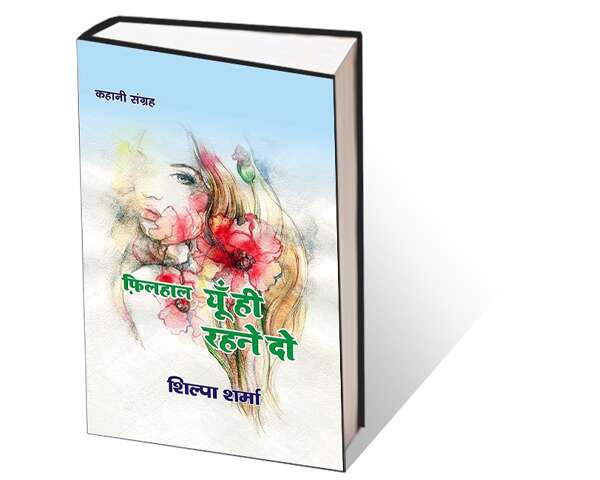
सच्चे स्त्री-विमर्श से सजी हैं फ़िलहाल यूॅं ही रहने दो संग्रह की कहानियां
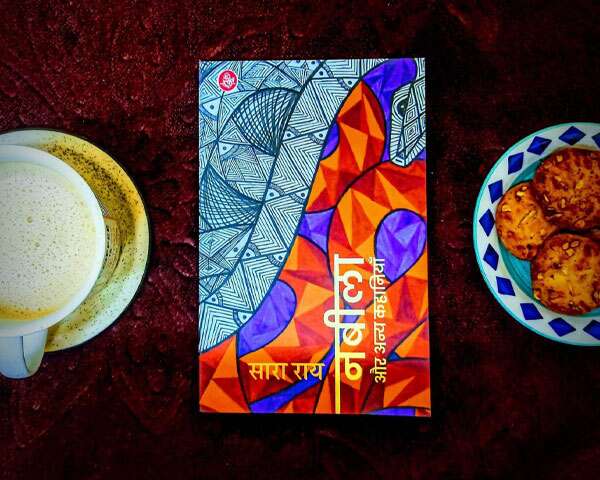
पुस्तक समीक्षा: ‘नबीला’ और अन्य कहानियां
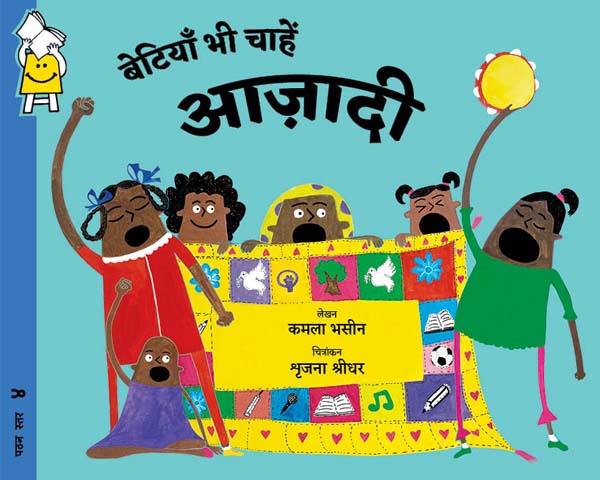
बच्चों की कल्पना को पर देने का काम करेंगी ये 7 हिंदी पुस्तकें!
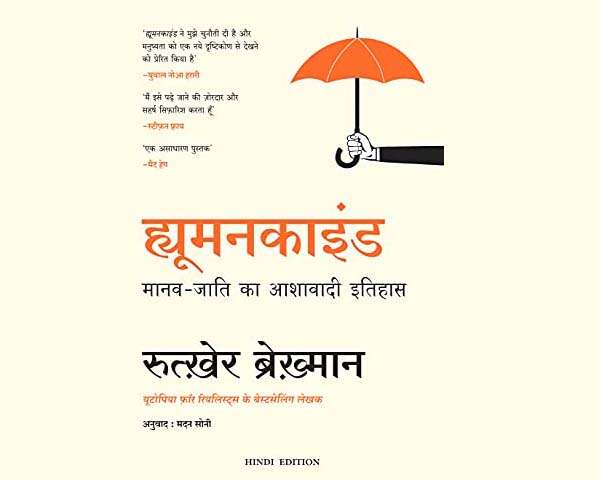
ह्यूमनकाइंड: किताब, जो मानवता पर हमारे विश्वास को और पुख़्ता करती है

कुछ लव जैसा: दोस्ती और प्यार की खट्टी-मीठी दास्तान
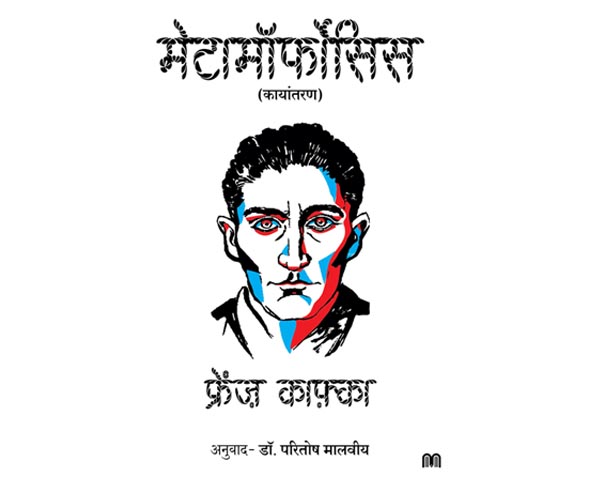
मेटामॉर्फ़ोसिस: एक कीड़े की कहानी, जो इंसानी स्वभाव को बयां करती है
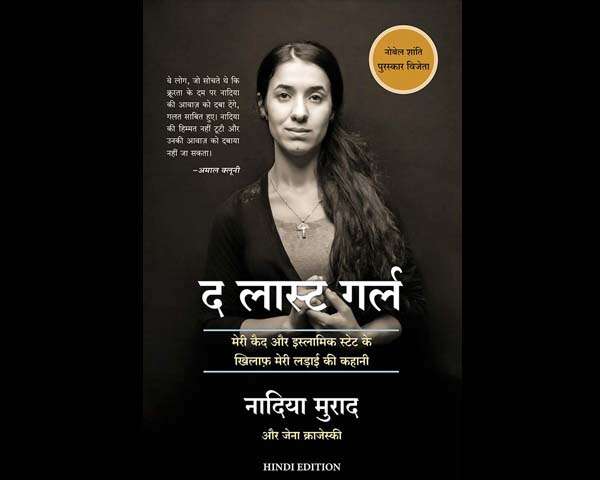
द लास्ट गर्ल: दुखों की गाथा, जो साहस और उम्मीद से भी भरी हुई है
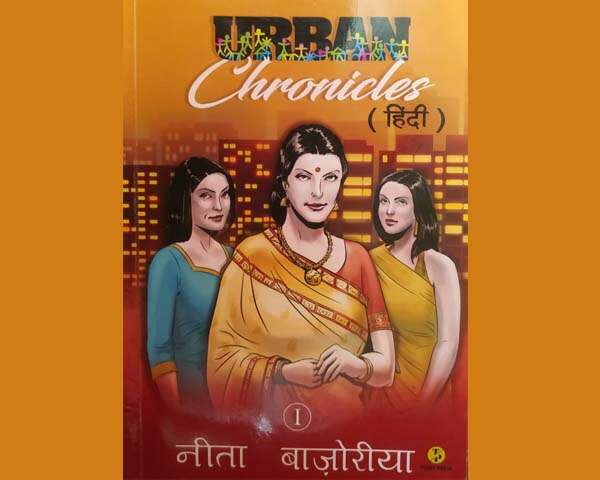
अर्बन क्रॉनिकल्स: शहरी कहानियों को रोचक अंदाज़ में प्रस्तुत करने की एक अच्छी कोशिश
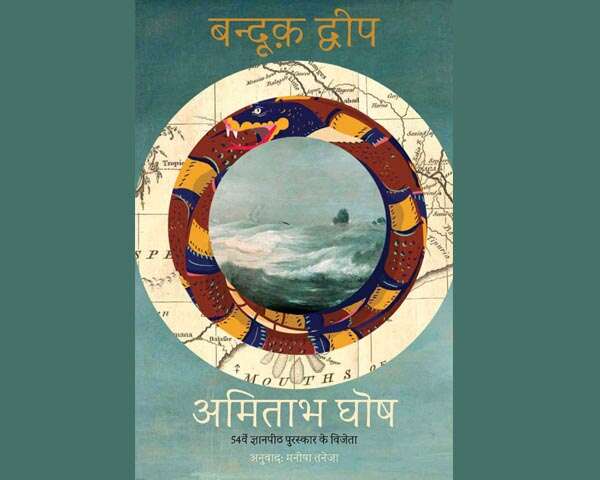
बंदूक़ द्वीप: अमिताभ घोष का उपन्यास, जो दुनिया को नए नज़रिए से देखने के लिए प्रेरित करता है

गुलिस्तां: शेख़ सादी की कहानियां जिन्हें पढ़ना यानी जीवन को सही रास्ते पर लाने की कोशिश करना

एनिमल फ़ार्म: 75 साल पहले लिखी किताब अब भी क्यों प्रासंगिक लगती है?
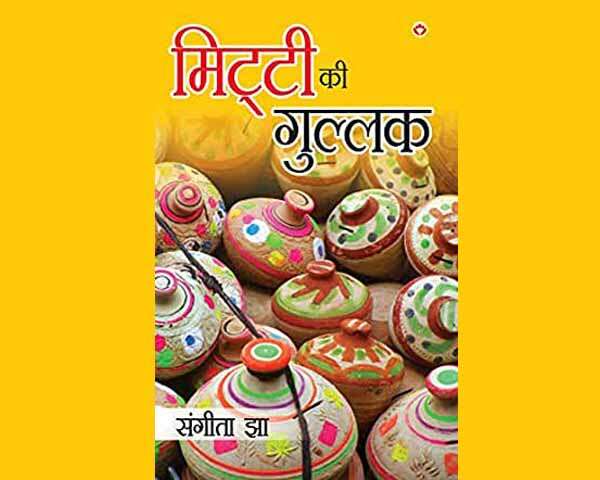
मिट्टी की गुल्लक: इस गुल्लक में हर घर की कहानियां संभालकर रखी हुई हैं
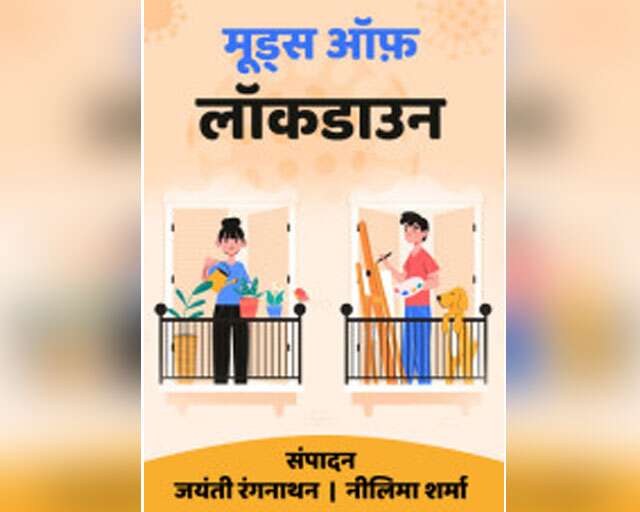
लॉकडाउन कहानियां, जो इस मुश्क़िल घड़ी में देती हैं राहत के कुछ पल
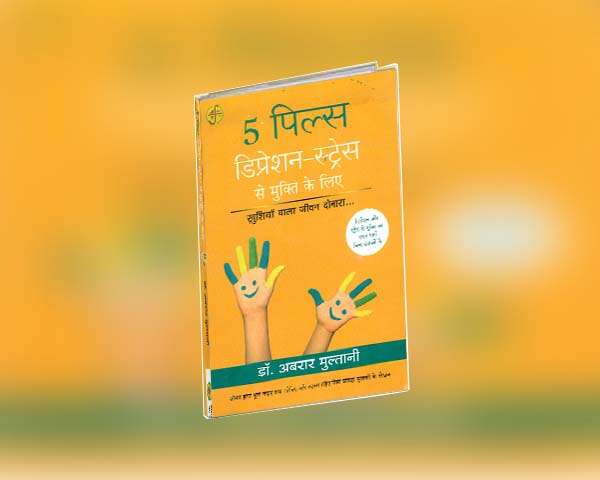
5 पिल्स फ़ॉर डिप्रेशन-स्ट्रेस, जिन्हें गटकर आप फ्रेश फ़ील करेंगे
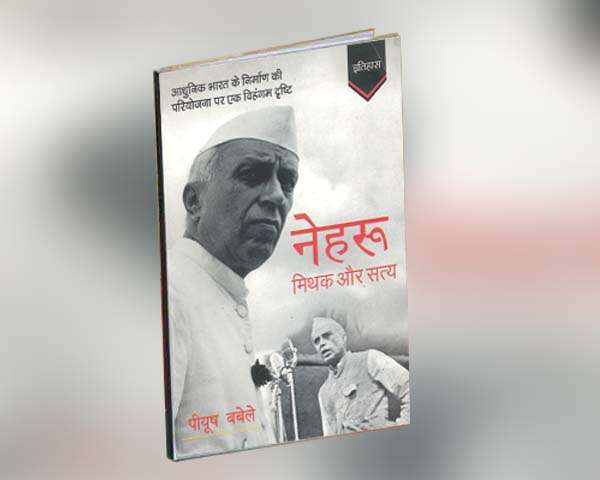
नेहरू मिथक और सत्य: नेहरू को काले-सफ़ेद घेरों से आज़ाद करती ज़रूरी किताब
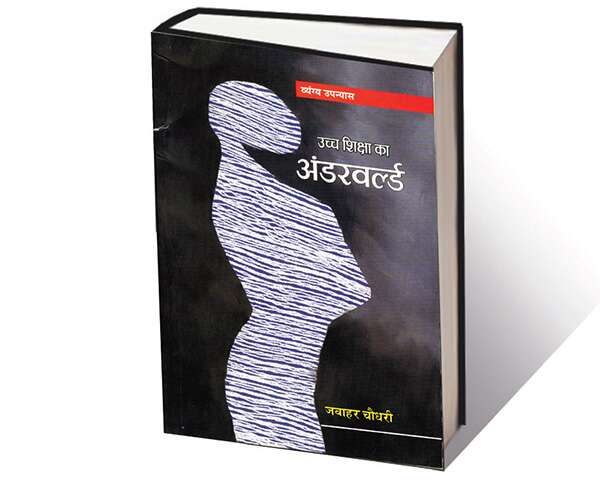
उच्च शिक्षा का अंडरवर्ल्ड: इस अंडरवर्ल्ड में गहराई थोड़ी कम है
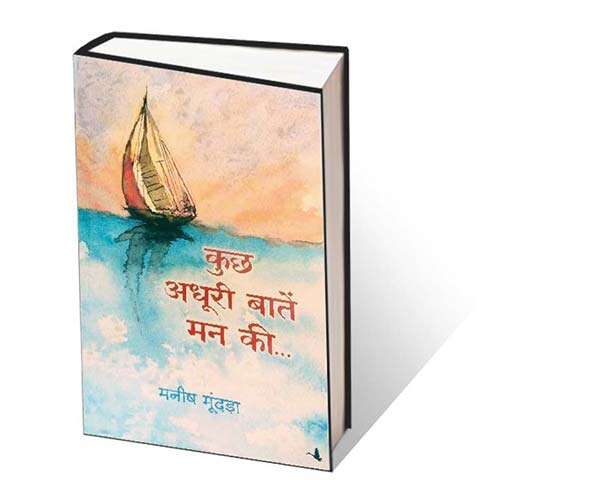
सफर की निरंतरता का प्रतीक है अधूरापन
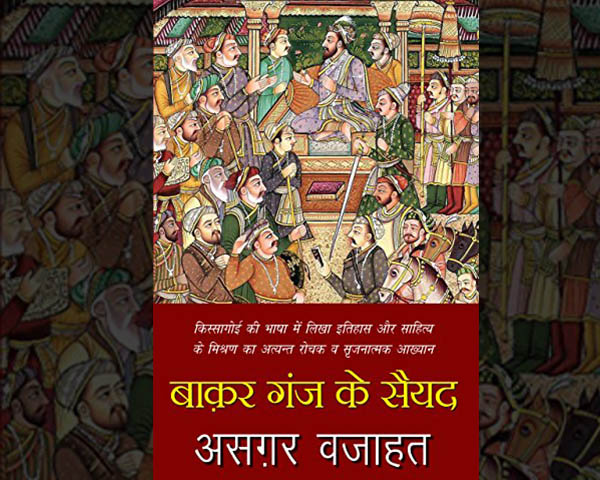
भारत की बहुसांस्कृतिक पहचान को बयां करती है बाक़र गंज के सैयद
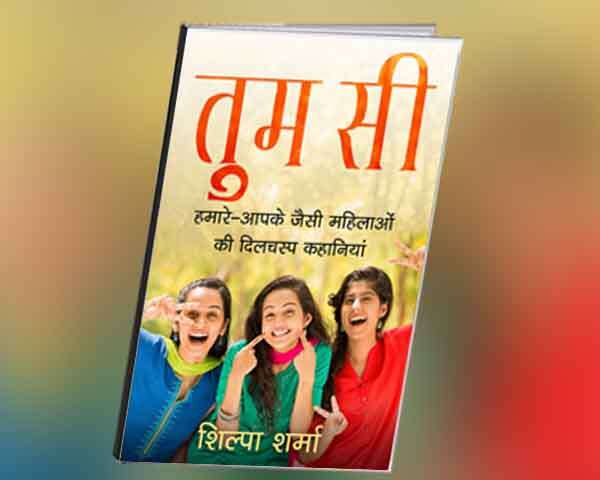
मनभावन और रोचक कहानियों का संग्रह है ‘तुम सी’

हिंदी लेखिकाओं की 10 सदाबहार किताबें
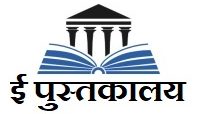
इतिहास / History
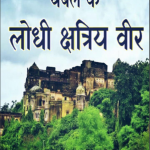
चंबल के लोधी क्षत्रिय वीर - Chambal Ke Lodhi Kshatriya Veer
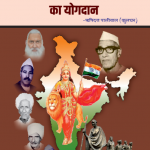
भारतीय स्वतंत्रता आंदोलन में पालीवाल ब्राह्मण समाज का योगदान - Bharatiya Swatantrata Aandolan Me Paliwal Brahman Samaj Ka Yogdan
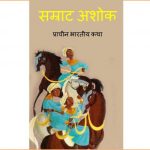
सम्राट अशोक - Samrat Ashok

प्राचीन भारतवर्ष - Prachin Bharatvarsh
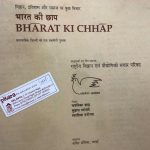
भारत एक छाप - Bharat Ek Chhap
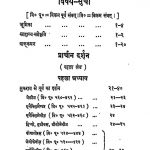
पाश्चात्य दर्शनों का इतिहास - Paschatya Darshano Ka Itihas
![%customfield(book_name_in_hindi)% - %customfield(book_name_in_english)% Prime Minister Atal Bihari Vajpayee [Bhag 2] by अटलबिहारी वाजपेयी - Atalbihari Vajpeyi](https://epustakalay.com/wp-content/uploads/2021/01/prime-minister-atal-bihari-vajpayee-bhag-2-by-atalbihari-vajpeyi-150x150.jpg)
प्राइम मिनिस्टर अटल बिहारी वाजपेयी [भाग 2] - Prime Minister Atal Bihari Vajpayee [Bhag 2]

वार्षिक रिपोर्ट 1971-72 - Varshik Report 1971-72
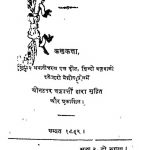
अफ़ग़ानस्तान का इतिहास - Afghanstan Ka Itihas
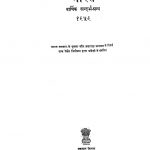
भारत वार्षिक सन्दर्भ-ग्रन्थ - Bharat Varshik Sandarbh-Granth
![%customfield(book_name_in_hindi)% - %customfield(book_name_in_english)% Mishra Bandhu Vinod [Hindi Sahitya Ka Itihas Aur Kavi Kirtan [Part 2] ] by अज्ञात - Unknown](https://epustakalay.com/wp-content/uploads/2021/01/mishra-bandhu-vinod-hindi-sahitya-ka-itihas-aur-kavi-kirtan-part-2-by-unknown-150x150.jpg)
मिश्रबन्धुविनोद [ हिंदी साहित्य का इतिहास और कवि कीर्तन [भाग २] ] - Mishra Bandhu Vinod [Hindi Sahitya Ka Itihas Aur Kavi Kirtan [Part 2] ]

जब अंग्रेज नही थे - Jab Angrej Nahi The
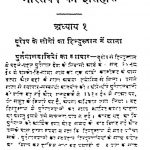
भारतवर्ष का इतिहास - Bhartvars Ka Itihas-2
![%customfield(book_name_in_hindi)% - %customfield(book_name_in_english)% Vishal Bharat Ka Itihas [ Part 1] by डॉ. कालिदास नाग - Dr. Kalidas Nag](https://epustakalay.com/wp-content/uploads/2021/01/vishal-bharat-ka-itihas-part-1-by-dr-kalidas-nag-150x150.jpg)
विशाल भारत का इतिहास [ भाग १] - Vishal Bharat Ka Itihas [ Part 1]
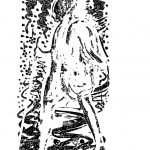
कला और आधुनिक प्रवृत्तियां - Kala Or Adhunik Pravartiya
![%customfield(book_name_in_hindi)% - %customfield(book_name_in_english)% Sampuran Gandhi Vangmay [Bhag 58] by मोहनदास करमचंद गांधी - Mohandas Karamchand Gandhi ( Mahatma Gandhi )](https://epustakalay.com/wp-content/uploads/2021/01/sampuran-gandhi-vangmay-bhag-58-by-mohandas-karamchand-gandhi-mahatma-gandhi-150x150.jpg)
संपूर्ण गाँधी वांड्मय [भाग 58] - Sampuran Gandhi Vangmay [Bhag 58]
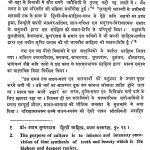
कविवर बुधजन व्यक्तित्व एव कृतित्व - Kavivar Budhjan Vyaktitva Evm Krititva
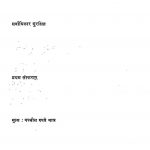
आधुनिक भारत - Aadunik Bharat
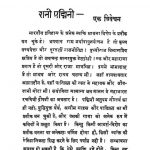
रानी पद्मिनी चरित्र चौपाई - Rani Padmini Charitra Chaupai
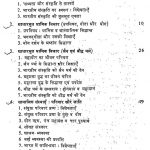
भारतीय सभ्यता एवं संस्कृति का इतिहास - History Of Indian Civilisation & Culture
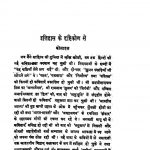
इतिहास की दृष्टि से कोलाहल - Itihas Ki Drishti Se Kolahal
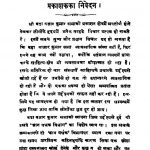
अज्ञात - Unknown
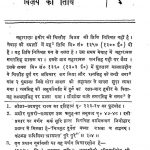
ऐतिहासिक शोध संग्रह - Aitihasik Shodh Sangrah

चन्द्रगुप्त विक्रमादित्य - Chandragupt Vikramaditya
![%customfield(book_name_in_hindi)% - %customfield(book_name_in_english)% Bharatvarsh Ka Itihas [Part 2] by अज्ञात - Unknown](https://epustakalay.com/wp-content/uploads/2020/12/bharatvarsh-ka-itihas-part-2-by-unknown-150x150.jpg)

भारतवर्ष का इतिहास [भाग २] - Bharatvarsh Ka Itihas [Part 2]
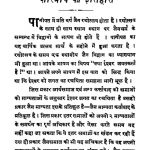
शास्त्रार्थ का इतिहास - Shastrartha Ka Itihas
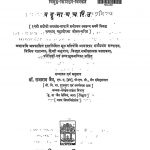
वड्ढमाण चरिउ - Vaddhamana Chariu
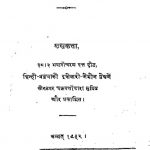
अफ़गानस्थान का इतिहास - Afganisthan Ka Etihas
![%customfield(book_name_in_hindi)% - %customfield(book_name_in_english)% Bharat Darpan Granthamala [Granth Sankhya 3] by पारसनाथ सिंह - Parasnath Singh](https://epustakalay.com/wp-content/uploads/2020/12/bharat-darpan-granthamala-granth-sankhya-3-by-parasnath-singh-150x150.jpg)
भारत दर्पण ग्रंथमाला [ग्रंथ संख्या ३] - Bharat Darpan Granthamala [Granth Sankhya 3]
![%customfield(book_name_in_hindi)% - %customfield(book_name_in_english)% Vishwavani [Year 1] [Jan 1941] [No. 1] by विभिन्न लेखक - Various Authors](https://epustakalay.com/wp-content/uploads/2020/11/vishwavani-year-1-jan-1941-no-1-by-various-authors-150x150.jpg)
The Journal
The Book Review, India’s first review journal in English, was started in 1976 by Chitra Narayanan, Uma Iyengar and Chandra Chari . It provides critical, in-depth reviews of books published in India and abroad on a variety of subjects — social sciences, humanities, fiction, management, environment, art, culture, science and children’s literature thus rendering a signal service to book lovers and scholars all over the country, including the small mofussil towns where access to the latest publications is difficult.
Chandra Chari
89 NMC Shankar Chowk Gurgaon Haryana-122002 Email: [email protected]
Uma Iyengar
23,Good Earth ,Palm Grove, Dodda Aldaman Road, Kumbhalgodu, Kengeri ,Bangalore-560074, Karnataka Email: [email protected]
Consultant Editor
- Adnan Farooqui
Advisory Board Founder Members
- K.R. Narayanan
- Nikhil Chakravartty
- Meenakshi Mukherjee
- Raja Ramanna
Editorial Advisory Board
- Romila Thapar
- Mallika Joseph
- Narayani Gupta
- Chitra Narayanan
- Girish Karnad
- T.C.A. Srinivasa Raghavan
About The Journal
The website provides complete instructions to authors/reviewers. The reviewers are requested to review the books with objectivity and an open mind, without any bias or prejudice. The reviews are required to be jargon free and easily accessible to students and scholars. The journal has a well-defined peer-review and publication policy. The journal has had an eminent editorial advisory board since its inception in 1976 and the members of the board have a policy of rigorous peer review of all submissions to ensure high standards of excellence in content and style.
The journal has a well-defined Ethics policy. The Book Review is a non-political, ideologically non-partisan journal which tries to reflect all shades of intellectual opinions and ideas. The views of the reviewer sand authors writing for the journal are their own. All reviews and articles published in The Book Review are exclusive to the journal and may not be reprinted without the prior permission of the editors.
The journal has a declared frequency of publication each year. The journal is published regularly and in time following its declared frequency It has been a monthly for the last 28 years. It has a postal concession from the Department of Posts and copies are posted regularly on the 10 th /11 th of each month.
The journal is indexed in a given database, the Archives of The Book Review which is updated every month.
__________________________________________________________________________________________
The journal levies no submission/publication charges.Review copies of books are sent to reviewers by the journal.Paid advertisements from publishers are carried in the print and the web edition.
No review may be posted on any website without prior permission. If a review or part thereof is found published on a website or on the social media, the editorial board will withdraw the review and not publish it in The Book Review.
Any judicial dispute, in case there is one, with The Book Review Literary Trust, can only be settled in a Delhi court.
The Book Review (TBR) was set up as a non-partisan, non-ideological forum to:
- Promote Indian publications and Indian authors, particularly those in the Indian languages
- Develop a culture of critical in-depth reviews, leveraging the expertise of the best in a given field
- Promote awareness of studies in special areas of concern such as South Asian issues and gender issues
- Encourage and develop high-quality translations of works in the Indian languages
- To attract a wider audience for the areas, subjects and issues of the journal’s focus
Since its inception, TBR has attained many of its objectives, quickly becoming the benchmark, across the world, for critical reviews of works published in South Asia. The focus on Indian languages, South Asian studies, gender issues and children’s books, has remained unwavering, with numerous special issues, seminars and publications. Globally, the leading experts in fields as diverse as international relations, Gandhian studies, and ancient Indian history regularly contribute to the journal. Covering a very broad array of subjects, this pioneering venture has rendered a unique service to the literary and academic community and the reading public. The main goal of TBR is now to reach out to a wider audience.
The Book Review, India’s first review journal in English, was started in 1976 by Chitra Narayanan, Uma Iyengar and Chandra Chari. From the beginning, an Advisory Board was set up with founding members K.R. Narayanan ,V.P. Dutt, Dr S. Gopal, Meenakshi Mukherjee and Dr. Raja Ramanna and Romilla Thapar.
In 1980, the journal was temporarily handed over to Nikhil Chakravartty of Perspective Publications as all three founding editors were no longer in Delhi. The Book Review Literary Trust was founded in 1989 to significantly expand the activities of the organization to seminars, translations, publications and lectures. The three founding editors also became the Trustees and took back control of the journal.
In 1990, the journal started being published in its unique tabloid format, with a characteristic contents page and page layout that was widely emulated by other magazines in the same space. TBR’s periodicity became monthly in 1993. Since then, TBR has gone on to widen the range and increase the frequency of its special issues, including issues on South Asia, the Indian languages, gender issues, environment, education and Children’s Literature. 1998 saw the introduction of Book Fair Specials. From 1999 every November issue became Children’s book Special. South Asia bumper specials was started in the year 2000.

Top 4 Book Recommendations See All

Top 5 Extracts See All

Top 5 Interviews See All

Top 4 Childrens Books See All

Top 4 Quizzes See All

Top 4 Asides See All

Top 4 Press Room See All

- Editors Recommend
32 Must-Read Books in Hindi

A good story should always be shared – even if it’s in a language different from ours. We’ve brought together a list of 30 of our best-loved books and novels in Hindi that you are sure to enjoy. So, start reading!

- Or buy from your local bookseller.
Download and read a eBook sample
Read with adobe digital editions.

March, Ma Aur Sakura, Harper Hindi's first original Hindi title is a mixed bag of old and new stories from the author of Mai, Tirohit and Hamara Sheher Us Baras. It deals with ordinary everyday realities such as the routine…

'Every thoughtful person, concerned for the future of this country, needs to read this book.' - Prof. Irfan HabibYaadon ke Bikhre Moti, the Hindi translation of the bestselling Remnants of a Separation, is a unique attempt to revisit the Partition…

We work hard to earn our money. But regardless of how much we earn, the money worry never goes away. Wouldn't it be wonderful if our money worked for us just as we work hard for it? What if we…

Just after midnight, a snowdrift stops the Orient Express in its tracks. The luxurious train is surprisingly full for the time of the year, but by the morning it is one passenger fewer. An American tycoon lies dead in his…

Poirot had been present when Jane bragged of her plan to ‘get rid of’ her estranged husband. Now the monstrous man was dead. And yet the great Belgian detective couldn’t help feeling that he was being taken for a ride.…

Hercule Poirot's quiet supper in a London coffee house is interrupted when a young woman confides to him that she is about to be murdered. She is terrified, but begs Poirot not to find and punish her killer. Once she…

A Miss Marple mystery.One minute, silly Heather Badcock had been gabbling on at her movie idol, Marina Gregg. The next, Heather suffered a massive seizure. But for whom was the deadly poison intended?While others searched for material evidence, Miss Marple…

Recently, there had been some strange goings at the Styles at St. Mary. Evelyn, constant companion to old Mrs. Inglethorp, has stormed out of the house muttering something about a lot of sharks. And with her, something indefinable had gone…

The last one-and-a-half years in India have been defined by the anti-graft agitation led by Anna Hazare. His key lieutenant, Arvind Kejriwal, has played a central role in the movement. In 2012, as it became clear that the political establishment was…

A gripping biography of India' first superstar Like a shooting star doomed to darkness after a glorious run, Rajesh Khanna spent the better half of his career in the shadow of his own stardom. Yet, forty years after his last…

Bharat Vikhandan is a book that speaks in favour of the latent potential within India and its diverse culture. It argues that the country's integrity is being diluted by three prominent Western cultures and discusses the resulting effects of the…

We bring out the best of Surender Mohan Pathak in a five-book box set for the fans of the undisputed king of crime fiction. Painsath Laakh Ki Dakaiti, 6 Crore Ka Murda, Jauhar Jwala, Hazaar Haath and Daman Chakra are…

A new novel from the King of Hindi crime fictionJeet Singh's ex-girlfriend Sushmita's rich industrialist husband is brutally stabbed to death. Her stepchildren destroy all evidence of Sushmita's marriage to their slain father, and implicate her in the case along…

Revised and updated. Zero Line Par Gulzar is much more than just another book on Gulzar. The author, who has known Gulzar for over two decades now, looks at Gulzar's non-film writings from the perspective of an artist, a painter,…

An astounding collection of personal and political stories set in varied locales and cultures. In this collection of sixteen stories, Gordimer brings unforgettable characters from every corner of society to life: a child refugee fleeing civil war in Mozambique; a…

Raghuram G. Rajan's commentary and speeches in I Do What I Do convey what it was like to be at the helm of the central bank in those turbulent but exciting times. Whether on dosanomics or on debt relief, Rajan…

Diler Mujrim is the story of lust for money and taking the route of crime to fulfill the craving for the currency. How a close relative of an ailing Nawab, Salim, goes on to murder to grab the booty. The…

One after another dead bodies are found in the jungle which sends everyone in a tizzy. A question of whodunit arises on the face of everyone. Read the fast paced book to know how the serial murder mystery is solved.

Excellent murder mystery! First an evening of celebrations at a hotel by two police officers, gunshot which claims one life which is first said to be a suicide and then turns out to be a murder. The man killed was…

Leonard is a blackmailer of the first order, he can stoop to any levels and is not restricted to blackmail. He commits other crimes including murder. The fast paced read offers you a very interesting story of how Leonard goes…

In Netaji Jehangir Contractor's Khandala house, Rajaram Lokhande shoots dead his cook Fazal Haque who has turned an informer. Jeet Singh kills Rajaram in his hotel room and escapes with his seventy-five lakh rupees to Goa. Amidst multiple high-profile intrigues…

As a child, all Aatish Taseer ever had of his father was his photograph in a browning silver frame. Raised by his Sikh mother in Delhi, his father, a Pakistani Muslim, remained a distant figure. It was a fractured upbringing…

Raising a demand for a Jan Lokpal, Anna Hazare and his team gave birth to a movement against corruption which gripped the nation. Anna Hazare's fast at Jantar Mantar shook the social as well as the political system of the…

There is a pilgrim soul in all of us, an inner searching that continues throughout our lives For lack of a purpose, millions in despair seek refuge in unbridled consumerism, drugs, alcohol, crime or antisocial behaviour. From times immemorial, man…

'Fresh, attractive, humorous and witty, Tiya is easy to read because it wears its learning lightly.'-Upamanyu Chatterjee The perky parrot Tiya's secure world is shattered when he hears an unknown voice urging him to leave his home, the old…

Brida has long been interested in various aspects of magic, but is searching for something more. In a forest, she meets a wise man who helps her overcome her fears and trust in the goodness of the world. She also…

Amma Bi is an elderly widow who lives alone in her deserted Lucknow haveli. Every afternoon, at precisely 3 o'clock, she hears the sound of unknown footsteps. Every afternoon, she peeks out ... but no one is there. In a…

In 2015, a historic panel discussion took place at the global Festival of Theology held in Sweden. Its objective was to examine what the sacred texts of the Abrahamic faiths - Judaism, Christianity and Islam - had to say about…

This book is meant for married, about-to-be-married and live-in couples. What do they expect from a relationship? Why does a marriage succeed or fail? How does one deal with unreasonable orthodox traditions? How can you understand your partner better? What…

There are no comments.
Leave a Reply
Your email address will not be published. Required fields are marked *
Save my name, email, and website in this browser for the next time I comment.
Please enter an answer in digits: four × 4 =
Your favourite literary newsletter just got a makeover!
New Releases • Author Speak • Events & Festivals Recommendations • First Look • After School Tales Press Room • Pre Orders • Coming Soon • Special Offers Trending • Just In • Also Read • And much more...
Privacy Overview
We will keep fighting for all libraries - stand with us!
Internet Archive Audio

- This Just In
- Grateful Dead
- Old Time Radio
- 78 RPMs and Cylinder Recordings
- Audio Books & Poetry
- Computers, Technology and Science
- Music, Arts & Culture
- News & Public Affairs
- Spirituality & Religion
- Radio News Archive

- Flickr Commons
- Occupy Wall Street Flickr
- NASA Images
- Solar System Collection
- Ames Research Center

- All Software
- Old School Emulation
- MS-DOS Games
- Historical Software
- Classic PC Games
- Software Library
- Kodi Archive and Support File
- Vintage Software
- CD-ROM Software
- CD-ROM Software Library
- Software Sites
- Tucows Software Library
- Shareware CD-ROMs
- Software Capsules Compilation
- CD-ROM Images
- ZX Spectrum
- DOOM Level CD

- Smithsonian Libraries
- FEDLINK (US)
- Lincoln Collection
- American Libraries
- Canadian Libraries
- Universal Library
- Project Gutenberg
- Children's Library
- Biodiversity Heritage Library
- Books by Language
- Additional Collections

- Prelinger Archives
- Democracy Now!
- Occupy Wall Street
- TV NSA Clip Library
- Animation & Cartoons
- Arts & Music
- Computers & Technology
- Cultural & Academic Films
- Ephemeral Films
- Sports Videos
- Videogame Videos
- Youth Media
Search the history of over 866 billion web pages on the Internet.
Mobile Apps
- Wayback Machine (iOS)
- Wayback Machine (Android)
Browser Extensions
Archive-it subscription.
- Explore the Collections
- Build Collections
Save Page Now
Capture a web page as it appears now for use as a trusted citation in the future.
Please enter a valid web address
- Donate Donate icon An illustration of a heart shape
NCERT HISTORY HINDI
Bookreader item preview, share or embed this item, flag this item for.
- Graphic Violence
- Explicit Sexual Content
- Hate Speech
- Misinformation/Disinformation
- Marketing/Phishing/Advertising
- Misleading/Inaccurate/Missing Metadata

plus-circle Add Review comment Reviews
1,830 Views
8 Favorites
DOWNLOAD OPTIONS
In collections.
Uploaded by History973 on August 13, 2020
SIMILAR ITEMS (based on metadata)
- Share full article
Advertisement
Supported by
2,500 Years of Indian History in One Book

- Apple Books
- Barnes and Noble
- Books-A-Million
When you purchase an independently reviewed book through our site, we earn an affiliate commission.
By Vikas Bajaj
- Nov. 18, 2016
INCARNATIONS A History of India in Fifty Lives By Sunil Khilnani Illustrated. 449 pp. Farrar, Straus & Giroux. $30.
Save a few giants like the Buddha, Akbar and Gandhi, the great figures of Indian history are little known outside the country, and some are little remembered inside the country, either. “Whether it’s arts, business, politics or sports, we have no biographies,” Ramachandra Guha, one of India’s most respected historians, said at a recent book event in New Delhi. Sunil Khilnani’s new book, “Incarnations: A History of India in Fifty Lives,” admirably tries to remedy that paucity by casting light on some of those obscured men and women.
Khilnani, who is the director of the India Institute at King’s College London, provides a whirlwind tour of roughly 2,500 years of Indian history in 50 fast-paced chapters. Each is a biographical sketch of an important personality from Indian politics, art, culture and economics, starting with the Buddha and ending with Dhirubhai Ambani, the son of a teacher who ended up building India’s largest and most successful corporations. Among these figures are the giants like Gandhi whom many readers will be familiar with. But the book really shines when Khilnani writes about the ideas and exploits of the many lesser-known characters like Malik Ambar, an Abyssinian slave who through luck and grit came to rule a patch of India’s Deccan peninsula and frustrated the Mughals who were trying to bring all of India under their control. Then there is Mokshagundam Visvesvaraya, a Robert Moses-like figure who oversaw public works in the kingdom of Mysore and helped bring electricity to Bangalore several years before it reached Bombay, which was under British control at the time. And the sad but inspiring story of the artist Amrita Sher-Gil, who gained fame and notoriety through her provocative paintings of herself and everyday Indian life but whose own life was cut short by either food poisoning or an abortion gone wrong.
Khilnani’s writing is easy to read, yet authoritative. He has spent much of his career studying India. His book “The Idea of India,” first published in 1997 and updated several times, is required reading for anybody seeking to better understand the country, its conflicts and its flawed but enduring democracy. In “Incarnations,” Khilnani draws on his prior scholarship but also on the work of numerous other scholars and journalists and primary sources. The book follows a BBC radio and podcast series of the same title that Khilnani wrote and narrated. The nearly 400-page book and the radio series contain a lot of the same material.
A potential pitfall of a book that seeks to tell the story of a country through 50 mini-biographies is that the stories won’t hang together and the sum of their parts will seem dull. But Khilnani avoids that trap and strives to connect the lives and ideas of his subjects to one another and to contemporary India. For example, he helps explain the role that the teachings of the Buddha played in shaping the thinking and choices of Ashoka, who established one of the largest empires in ancient India but gave up violence after a string of brutal victories that left many thousands dead. “Legends aside, Ashoka used the faith to create an exceptional doctrine of rule, one that may have stemmed from regret over his youthful aggression, but was also a shrewd response to the empire he controlled,” Khilnani writes in his chapter on the king.
The book also describes how Bhimrao Ambedkar, an architect of India’s Constitution and one of the most prominent leaders of Dalits, formerly known as the untouchables in the Indian caste system, embraced Buddha and renounced Hinduism. This makes the book a lot more than a collection of 50 loosely related biographical essays. Readers can dip in and out of chapters randomly without being confused, but “Incarnations” is most rewarding when read from start to finish.
There are, however, a couple of big, unexplained holes in this otherwise solid volume. There is no chapter on Jawaharlal Nehru, India’s first prime minister and, arguably, one of the country’s most consequential leaders. While Nehru appears prominently in chapters about other people, including one about his daughter, Indira Gandhi, another important prime minister, we never get a full portrait of him or Khilnani’s assessment of his place in Indian history. He acknowledges the omission in his introduction but never fully explains the reason. It could be that Khilnani is saving that material for his long-awaited biography of Nehru.
The other big gap is less obvious but just as important. “Incarnations” does not profile any of the right-wing Hindu ideologues and activists whose ideas are ascendant in India right now and are subscribed to by the country’s charismatic and controversial prime minister, Narendra Modi. One of those figures, Vinayak Damodar Savarkar, has a cameo in the chapter on Gandhi, but Khilnani moves on pretty quickly without discussing in much detail how Savarkar and others like him developed the idea of Hindu nationalism. This absence is all the more strange when placed next to Khilnani’s keen interest in one of the central fault lines in Indian politics and public life: the tension between liberals, who celebrate the country’s diversity and advocate policies to protect minority rights, and Hindu nationalists, who reject secularism and insist that Hinduism should be the central organizing principle of the country and its government.
That said, any book that seeks to tell the story of a country and a people as complicated and diverse as India and Indians will leave stones unturned. To my mind the best thing Khilnani has done is to leave the reader wanting more. It would be a huge accomplishment if the most enduring contribution of “Incarnations” to the literature about India, especially in the West, should be to open the door to more biographies about Indians.
Vikas Bajaj, an editorial writer for The Times, was previously the paper’s Mumbai bureau chief.

गोदान ( उपन्यास ) की समीक्षा | Godan Book Review In Hindi
Godan Book Review In Hindi – हेल्लो फ्रेंड्स , आज के इस लेख में हम मुंशी प्रेमचंद जी की सर्वोतम कृति माना जाने वाला उपन्यास गोदान की समीक्षा करेंगे ! यह एक कृषि और भारतीय संस्कृति पर आधारित महाकाव्य है जिसमे भारतीय गाँवो के समाज का सजीव चित्रण किया गया है ! इस उपन्यास में होरी और धनियाँ को मुख्य पात्र बनाया गया है ! आइये जानते है Godan Book Review In Hindi
Introduction
Name – Godan ( उपन्यास )
Author – Munshi Premchand
Subject – साहित्य
Pages – 328
लेखक के बारे में ( About Author )
मुंशी प्रेमचंद का जन्म वाराणसी , उत्तर प्रदेश में 31 जुलाई , 1880 को हुआ ! वह एक अध्यापक और लेखक के रूप में जाने जाते थे ! उन्होंने बहुत सी कहानी और उपन्यासों की रचना की है ! उन्होंने अपनी कहानी और उपन्यासों द्वारा समाज में एक अलग ही पहचान बनाई है ! उनके कहानी और उपन्यास आज भी उतने ही प्रासंगिक है जितने पहले थे ! 56 वर्ष की उम्र में 8 अक्टूम्बर 1936 को उनका देहांत हो गया था !
Godan Book Review In Hindi
गोदान ( Godan ) मुंशी प्रेमचंद का एक हिंदी उपन्यास है जिसमे 20 सदी के रुढ़िवादी समाज का जिवंत चित्रण किया गया है ! Godan में भारतीय किसान का अद्भुत चित्रण किया गया है जिसमे दिखाया गया है कि वह कैसे अपने परिवार को पालने के लिए सेठ , साहुकारो , जमींदारो आदि के शोषण का शिकार होता है और अपनी पूरी जिंदगी भय और निराशा के साथ गुजारता है !
गोदान में बताया गया है कि कैसे एक भारतीय किसान अपनी छोटी – छोटी जरूरतों के लिए साहुकारो से ऋण लेता है और हमेशा उस कर्ज को चुकाने के लिए निराशा में अपनी सम्पूर्ण जिंदगी गुजार देता है ! इसमें बताया गया है कि कैसे जमीदार , मील के मालिक , पेशेवर वकील , राजनेता लोग आदि अनपढ़ और नासमझ किसानो का शोषण करते है !
गोदान में लेखक प्रेमचंद ने जो भी बाते कही है वे सब एक संदर्भ में कही है जो आज भी उतना ही महत्वपूर्ण रखती है जितना वो पहले रखती थी ! गोदान में लेखक ने महाजनों , साहुकारो आदि पर तीखे प्रहार किये है और बताया है कि एक किसान को पूरी जिंदगी इनके चक्कर लगाने में गुजारनी पड़ती है !
गोदान उपन्यास के मुख्य पात्र
होरी – मुख्य नायक
धनियाँ – होरी की पत्नी
गोबर , सोना , रूपा – होरी की संतान
हीरा और शोभा – होरी के भाई
झुनियाँ – गोबर की पत्नी
मुंशी प्रेमचंद जी एक बहुत बड़े कहानीकार और उपन्यासकार के रूप में जाने जाते है ! उनकी कहानियां और उपन्यास आज भी समाज को एक अच्छा सन्देश देती है ! गोदान प्रेमचंद जी का एक बहुत ही शानदार उपन्यास है ! गोदान ( Godan ) में लेखक ने हमारे समाज की कुंठा , निराशा , ऋणग्रस्तता आदि का बहुत ही सुन्दर चित्रण किया है ! प्रेमचंद जी ने गोदान के जरिये यह बताने का प्रयास किया है कि भारतीय किसान साहुकारो के चंगुल में फसकर कर्ज का शिकार रहा है और अपने परिवार का पेट पालने की चिंता में ही अपना जीवन गुजर देता है !
Related Post :
- गबन उपन्यास का सारांश
- निर्मला मुंशी प्रेमचंद उपन्यास समीक्षा
- प्रतिज्ञा मुंशी प्रेमचंद उपन्यास समीक्षा
- आत्मा के लिए अमृत बुक समरी
- स्वयं में विश्वास
- Rich Dad Poor Dad Book Summary In Hindi | रिच डैड पुअर डैड

हेल्लो फ्रेंड्स , मेरा नाम जगदीश कुमावत है और मै BooksMirror.Com का फाउंडर हूँ ! यह एक हिंदी बुक्स ब्लॉग है जिसमे हम Motivational और self – help बुक्स की समरी और रिव्यु शेयर करते है !
Leave a Comment Cancel reply
Save my name, email, and website in this browser for the next time I comment.

1-16 of over 1,000 results

Waiting for Shiva: Unearthing the Truth of Kashi’s Gyan Vapi in Hindi ( प्रतीक्षा शिव की: ज्ञान वापी काशी के सत्य का उद्घाटन )

Hey Ram हे राम, Gandhi Hatyakand ki Pramanik Padtal गाँधी हत्याकांड की प्रामाणिक पड़ताल

Bharat Gandhi Ke Baad (Hindi)

B.O.S.S (Hindi Version) Basics of Sanatan Sanskriti सनातन संस्कृति का मूलज्ञान

Savarkar: Ek Bhule-Bisre Ateet Ki Goonj

Hindutva by Vinayak Damodar Savarkar (Hindutva Vichar, Savarkar, Two Nation Theory and Hindutva + Life of Vinayak Damodar Savarkar) in Hindi

Kashmirnama

Story Books for Kids (Set of 5 Books) (Illustrated) (Hindi) - Indian Freedom Fighters - Biographies for Children - 6 Years to 10 Years Old - Gandhi, Patel, Nehru, Subhash Chandra Bose, Bhagat Singh

Krantikari: Bharat ke Swatantrata Sangram ki Ek Alag Kahani

Bharat Vibhajan: Introduction of the Two Nation Theory (India Partition— Exploring the Idea of Hindu Nationalism) Hindi Edition Book

Emergency Ki Inside Story (National Emergency in India: Case That Shook India) Indira Gandhi The 'Emergency' and Indian Democracy in Hindi

Bharatvarsh Ke Aakrantaon Ki Kalank Kathayen

1857 Ka Swatantraya Samar (Indian Rebellion of 1857 : War of Independence 1857) Hindi Version

Madhyakaleen Bharat (Vol. 1) 750-1540 (Hindi)

Jhansi Ki Rani
- Get It Today
- Get It by Tomorrow
- Get It in 2 Days
- Indian History
- 4 Stars & Up & Up
- All Discounts
- Today's Deals
- Last 30 days
- Last 90 days
- Kindle Unlimited Eligible
- Kindle eBooks
- Eligible for Pay On Delivery
- Vikram Sampath
- Nitin Singhania
- 10% Off or more
- 25% Off or more
- 35% Off or more
- 50% Off or more
- 60% Off or more
- 70% Off or more
- Cocoblu Retail
- Vikram & Himani
- Bookworld India
- Repro Books-On-Demand
- BOOK CENTRE
- Sunrise Book store
- Include Out of Stock
- Press Releases
- Amazon Science
- Sell on Amazon
- Sell under Amazon Accelerator
- Protect and Build Your Brand
- Amazon Global Selling
- Become an Affiliate
- Fulfilment by Amazon
- Advertise Your Products
- Amazon Pay on Merchants
- COVID-19 and Amazon
- Your Account
- Returns Centre
- 100% Purchase Protection
- Amazon App Download
- Conditions of Use & Sale
- Privacy Notice
- Interest-Based Ads

'Manohar Kahani' book review: A thrilling read that makes one revisit a time when chaos seemed enjoyable
Growing up watching Abbas Mastan’s movies was a great way to add some action to a calm weekend. A seemingly normal story often ended up having a conflict leading to several twists and turns with a tinge of comic relief. Reading Raghu Srinivasan’s Manohar Kahani makes one revisit a time when chaos seemed enjoyable. The Hindi title simply translates to a fascinating story, and it indeed is. Srinivasan, who is a serving officer in the Indian army, has served up a perfect medley of greed and schemes, topped with a garnish of resilience.
Bambi Mehta, a bureaucrat at the Finance Ministry finds himself transferred to the Konkan coast as a punishment for incorrectly predicting the crash of the Indian stock market. His partner Kalyani, who used to be a secretary in the Polish Embassy, accompanied him and together they decided to pursue their passions instead, leading them to leave their jobs. This is how Kokum Grove, a homestay, came into being.
Kalyani and Bambi were finally living the life they wished for A storm, however, comes knocking when a rich NRI from Africa wants to buy Kokum Grove. Bobby Chander, a man who knows how to bend the rules in his favour, continues to pester the couple even after Kalyani refused his offer. He starts mini projects to frustrate them into giving up the property. This forces Kalyani to seek help from her younger sister Maya, an expert in scheming.
As one thing leads to another, the Mehtas and Maya are able to trap the rich fish into its own net. Meanwhile, Maya finds a mentee in Kokil, Bobby’s stepdaughter who loathes him, and wants to arm-twist him into giving up his ploy to own the property.
It is a story that seems simple on the outset, but it made richer with varied components. Manohar Kahani has a strong foundation with clearly etched characters—a strong-willed entrepreneurial woman, her occultist absent-minded husband, their goody two shoes son, her resourceful and cunning sister, a wealthy obnoxious NRI guy and his stepdaughter, who is eager to revolt against him. There are also smaller, but equally intriguing side characters, who have been given interesting attributes.
The underlying message is that of how big financers take over businesses and other resources like land from unsuspecting people to then resell at inflated prices once an upcoming developmental project is finished. And it is brilliantly conveyed with a pinch of humour sprinkled throughout the intricate traps making this an even more thrilling read.
Manohar Kahani
By: Raghu Srinivasan
Publisher: Hachette
Price: Rs 399
Follow The New Indian Express channel on WhatsApp
Download the TNIE app to stay with us and follow the latest
Related Stories

- Book Review: History of Islam and Muslims in Australia
Posted by Dzavid Haveric | 26 May, 2024 | Uncategorized | 0 |

Dr Dzavid Haveric.
A comprehensive understanding of Islam and Muslim history assumes pivotal significance within the contemporary globalised milieu, particularly as the Muslim diaspora continues to burgeon incessantly.
This imperative is accentuated when considering the unique historical trajectory of Islam in Australia, a vast continental nation geographically distant from numerous other global landmasses.
While extant scholarship has contributed partially to our understanding of this subject, the groundbreaking nature of Dr Haveric’s seminal work cannot be overstated.
Representing a pioneering endeavour, this scholarly work undertakes a comprehensive exploration of the subject matter, spanning from the 9th century CE (3rd century in the Islamic calendar) to the mid-20th century.
The distinctive merit of Haveric’s study lies not only in its authorship by a preeminent scholar in the field but also in its provision of novel and original insights.
This meticulously crafted research serves as a corrective to pre-existing information, presenting an invaluable resource that promises to reshape our understanding of Muslim history in Australia. Dr Haveric meticulously unpacks the multifaceted contributions of Muslims to the rich tapestry of ethnic, linguistic and cultural diversity intrinsic to the Australian mosaic. A work of considerable significance, it is imperative reading not only for the Muslim community in Australia but also for a broader readership encompassing individuals from diverse backgrounds.
This erudite examination, elevating the historical discourse surrounding Islam in Australia, sets a discernibly high standard through Haveric’s assiduous scholarship. The meticulousness with which the study addresses a myriad of dimensions in the historical trajectory suggests that it will serve as an exemplary model for subsequent scholarly endeavours in this domain. Ismail Albayrak, Professorial Fellow at the Faculty of Theology and Philosophy, School of Theology, Australian Catholic University. This review was first published in Zadok Perspectives 162: Multicultural Odysseys and Storms (Autumn 2024), 23-25. Edited and republished with permission.
————————————————
This book covers periods from the 9th century to the 1940s, throwing light on a number of themes. In its first part, the book highlights the early influence of Islamic civilisation, the early Muslim discovery of Australia as well as some early practices evocative of Islam among the Aborigines.
It includes a forgotten treasure along the shores of Australia’s Top North and the formation of Islamic discourse in the course of the first voyages with contribution of Macassans and Malays followed by their encounters with Europeans.
In its second part, the book reveals social aspects of the first Muslim convicts and free settlers in the colony. It highlights the arrivals of Afghans and Indians, and their historical contributions in Australia’s inland.
This is followed by settlement issues in Ghantowns and Malaytowns and social life there. The book presents in detail records of early mosques, Islamic festivals across Australia and the Australian Muslims’ travels for pilgrimage to Mecca.
It documents the Ottoman and Indo-Afghan communities and their important legacy in Australia. It uncovers the unique contribution of the ANZAC Muslims of various ethnic backgrounds in defending Australia’s borders, freedom and democracy.
Dr Abdul Khaliq Kazi, Former Professor at the University of Melbourne.
——————————————————— Dr Dzavid Haveric develops a story in which he explains how Muslims have settled within the Australian Commonwealth to build diverse, multi-ethnic and cosmopolitan communities.
This comprehensive account of Islam in Australia, reaches back to 9th century Muslim records of exploration and from more recent pre-colonial times when Macassan fishermen made their regular yearly visits to Northern Australia renewing contacts with the country’s indigenous custodians.
The small but persistent presence of Muslims from the earliest days of British settlement is also part of an intriguing and still unfolding story. It is not merely an account of how Islam presents itself among other religions, but of a Muslim multi-ethnicity, with the many stories of a diverse and pluralistic faith-community.
This book will provide the reader with an insight of what it means for the vast majority of Muslims around this vast country – from Cocos Islands to the east coast – who are happy to declare: ‘Australia is my home’.
Dr Bruce C Wearne, Former Senior Lecturer at Monash University
About The Author

Dzavid Haveric
Dr Dzavid Haveric is an Adjunct Research Fellow, Historian and Author at the CISAC, Charles Sturt University, and a Research Associate at the Melbourne Museum, Victoria, Australia.
Related Posts

Urgent call for collective action on climate change
September 6, 2018
Social Page 130
August 27, 2016

A black day in the history of India
March 29, 2022

The Voice: Do you want to be on the right side of history?
June 23, 2023
Leave a reply Cancel reply
Your email address will not be published. Required fields are marked *
Save my name, email, and website in this browser for the next time I comment.
Recent Comments
- Deena on Greater Dandenong Council hoists Palestinian flag
- Khoder on Grill’d breaks barriers with first all Halal restaurant
- RPLA on Sisters win Silver Award in Global Robotics Challenge
- Mira on From welcome to wisdom: MyFundAction’s new year’s journey with revert Muslims
- Jo on Logan lights up: EID FOR ALL 2024 celebrates unity in diversity!
- AAM summit focus: Gaza, Islamophobia and advocacy
- The honourable family of Ibrahim (a)
- Autumn: Time remember bounties of God
- Transforming Lives in Logan: QTES’s community foundation skills program thrives
- Tumut Cycle Classic’s enduring spirit
- Abbas Alvi wins Community Service Award
- I am God sent: Narendra Modi
- How Narendra Modi’s cult of personality was formed by a powerful Hindu nationalist group with a dark history
- EKONOMOS Issue 5, 2024 launched at ABSC annual gala dinner
- Australia Pakistan Chamber hold gala dinner
- LMA leaders praise Young Mosque’s progress
- AIMA South Australia: A comprehensive exploration of Metabolic Syndrome and Obesity Symposium
Advertisement
More from the Review
Subscribe to our Newsletter
Best of The New York Review, plus books, events, and other items of interest
June 6, 2024
Current Issue
Wings of Desire
April 4, 2024 issue
Bonhams London
The Ecstasy of Saint Joseph of Cupertino ; unknown artist of the Italian school, 1700s
Submit a letter:
Email us [email protected]
They Flew: A History of the Impossible
Have you ever bitten into a piece of fruit so delicious, so ripe and perfect in its flavor and sweetness, that you vibrated, just a little, with pleasure? The Franciscan beggar Salvador de Orta did. He sliced into a pomegranate and—seeing in the multitude of tiny seeds a microcosm of everything beautiful in God’s perfectly ordered world—rose into the air in ecstasy. God was there in the fruit.
He was in the kitchen, too. Teresa of Ávila told her spiritual daughters that “God walks amidst the pots and pans, helping you with what’s internal and external at the same time.” So when the nuns found Teresa suspended in the air, transfixed in ecstatic union with God, a frying pan still clenched in her hand above the cooking flames, they may not have been surprised. It was God, helping her with both the internal (lifting her soul up to heaven) and the external (the frying of, perhaps, an egg).
They flew. They flew! That is Carlos Eire’s claim, in this deeply unserious book. Salvador and Teresa; the idiot savant Joseph of Cupertino, patron saint of airplane travelers; Saint Francis of Assisi, who with flames of love pouring from his face and mouth lifted his friend Masseo up in the air with his breath, uttering “Ah! Ah! Ah!” These enchanted men and women rose to church rafters and to crucifixes, they flew so high that roof tiles had to be removed; they flew to the topmost branches of the trees and perched there like birds. They flew at the slightest provocation—a lamb that reminded them of Christ, the perfection of a tidy flower, the reedy music of a flute blown by a shepherd. All enough to rend the veil of nature and send them up—up—up.
In They Flew , Eire offers what he calls a “history of the impossible”: a history of the early modern men and women who levitated and of those who bilocated, that is, who were in two places at once, whether inside isolated chambers within convents and evangelizing indigenous communities in New Mexico or on their knees before altars in remote Spanish churches and in Japan, giving spiritual succor to missionaries. More than other forms of the miraculous, Eire argues, levitation and bilocation force us to confront the status of the supernatural in history writing. So far, our feet remain on firm scholarly ground. For all of Eire’s protests that his subject is professionally “eccentric” or “risky” or even deemed “incompatible with seriousness,” the history of the supernatural in early modernity—of miracles, witchcraft, magic—is a perfectly normal field of inquiry.
What is more incompatible with seriousness is Eire’s contention that these miracles actually happened. These people flew. At least, I think that’s what he argues; it’s hard to tell, through the irony. (The closest we get to a thesis is this: “The assumed impossibility of certain events deserves closer scrutiny and some challenging.”) His reasoning is not so much advanced as danced around: in jokes, in suggestion and coincidence, in bizarre counterfactuals, in hypotheticals, in torrents of rhetorical questions. He would probably call this a style. I would call it evasion, even a kind of professional dishonesty. It’s hard not to feel that he’s written the book in such a way that, if pressed, he could plausibly deny that he ever said “they flew.”
In one such stream of baffling questions he asks:
Why do we have high-speed magnetic levitation trains but feel the need to bracket all reports about hovering saints or witches? How can millions of us humans be in multiple locations simultaneously via the internet, day after day, but still feel the need to scoff at bilocation? Why is the only fact that we can accept about human levitation the fact that others, long ago, thought it was possible?
Under the slightest pressure, these insinuations collapse. Is Eire claiming that magnetic levitation trains are suspended in the air by God? Or is it rather that Joseph of Cupertino had magnets in his shoes? Did bilocating saints have access to a celestial Wi-Fi connection? Is the Internet God’s immanence, too? (In which case, a follow-up question: Are we in hell?) To read Eire’s book is to experience a profound disorientation. He would probably take that as a compliment. Is God a magnet? I wondered, and then had to put down the book and get some air.
In early modernity, the membrane that separated the natural world from the supernatural was gossamer thin; it might be ruptured at any moment. Saints and their miracles were physical evidence of the workings of supernatural grace in the natural world. They flew, they hovered, they teleported; their hands and feet bled like the wounds of Christ; their bodies glowed with brilliant light; they could smell the sins of others. They survived with barely any food—a Eucharist wafer a day, perhaps—and were supernatural insomniacs, defying the body’s need for sleep. They moved objects by telekinesis; they were mind readers. They could see things happening elsewhere and received divine messages in their dreams. They commanded animals and the weather. When these unusual people died, their bodies refused to decompose; their corpses oozed a pleasant-smelling goo that had healing, miracle-working properties when smeared onto the broken bodies of the faithful.
There were hundreds of these flying, sleepless, starving people in premodern Europe: one Spanish writer complained that “it seems as if one had wished to reduce these kingdoms to a republic of enchanted beings, living outside the natural order of things.” Some of the levitators were famous: Ignatius of Loyola, founder of the Jesuits, who was observed glowing and “raised up in the air, with his knees bent, weeping and sighing”; or Francis of Assisi, “raised so high in the air and surrounded by such radiance” that people lost sight of him. When Giotto painted the scene he showed Francis levitating above swirling, parting clouds, a kind of medieval human rocket ship. But so many people started to fly in early modernity that there are hundreds more whose names have now fallen into obscurity, part of what Eire aptly calls the “inflationary spiral” of Catholic sanctity.
Did they fly? It was a question that bore the pressure of a fracturing continent. The boundary between the supernatural and the natural was a major point of contention in the Reformations that transformed Europe in the sixteenth and seventeenth centuries. Eire argues that the Protestant reformers radically reconfigured the relationship between the two realms. They sealed off the supernatural world, made it inaccessible, and “rejected the commonplace irruptions of the sacred” that had characterized medieval Christianity. For the reformers, there were no miracles after the biblical period of church history: all accounts of flying, healing, glowing were falsehoods, manipulations, superstitions. The miraculous became a theological weapon in the confessional arsenal. Protestants argued that so-called miracles were evidence that the Catholic Church was rife with demons, or that they were a bunch of swindlers; Catholics argued that miracles proved God really was on their side, that Protestantism was a heresy.
But what sent these enchanted people into the sky? Was it God—were they saints? Or were they animated by demons, flying in an evil sort of way, like witches? Worse, were they committing fraud, concealing their stilts or suspension by ropes, bouncing from an invisible premodern trampoline? The Catholic Church was reforming itself, too, and they had to be sure they weren’t allowing the faithful to pray to a charlatan. The writings of holy people were examined for evidence of their sanctity, and even Teresa of Ávila wasn’t immune from the Inquisition’s suspicion. She wrote her spiritual autobiography knowing that the text would be vetted for orthodoxy and authenticity. Her descriptions of how it felt to levitate give us a sense of what it was like for a woman to negotiate such pressures. She describes becoming insensate, “as if the soul has forgotten to animate the body.” Her eyes were open but unseeing; “I come close to losing my pulse altogether.” And then: she flew. Teresa described an out-of-body experience, a “new estrangement”: “I must confess,” she wrote, “that it produced an exceedingly great fear in me at first—a terrible fear, in fact—because one sees one’s body being lifted up from the ground .”
Not that she enjoyed breaking the laws of nature. Teresa begged the other nuns to grab her habit when she started to float up; she reached for anything nailed down, she prayed that God would put an end to her levitations. This was a winning strategy for holiness, because the best way to become a saint was to prove that you never wanted to be one in the first place. When God eventually did stop lifting her into the air, that was yet more proof: she’d even managed to strike a deal with him. Eight years after she died, Teresa’s miracles were already wielded against reformers. One of her hagiographers wrote that “God willed at this time…a lone, poor woman, to sound her challenge and raise the battle flag,” to humiliate the “throngs of infidels” and “heretical nations.”
The question of sanctity generated a lot of paperwork. In 1588 the Vatican created a new office, the Congregation of Sacred Rites and Ceremonies, to take charge of canonization. Saint making was complicated. To collect the accounts of miracles, to verify them; to interrogate witnesses, seek opinions of medical and scientific and theological experts: Church bureaucrats were verifying the supernatural with new evidentiary standards. This was where the promotor fidei , better known as the devil’s advocate, came in . But he wasn’t really in the pocket of the devil. He was a professional doubter, a Church bureaucrat who neither denied the existence of miracles nor believed in them but allowed instead for a subtler third thing: not knowing. Just because some phenomena—a flying friar, a stigmatic and bleeding nun—couldn’t be explained didn’t mean it was God at work.
The seventeenth-century friar Joseph of Cupertino flew so often, so extravagantly, so publicly, that he forced everyone around him—peasants and princes, Protestants and inquisitors—to confront the boundary between the inexplicable and the impossible. Joseph was a kind of holy idiot, called Bocca Aperta (“open mouth”) in school, who did everything wrong: he read poorly, was kicked out of a monastery for breaking pots and spilling food. Accepted into a new friary, he was put in charge of the mule because he couldn’t do anything else right. After two years of intense mortification and starvation—he ate only herbs, dried fruit, beans, and rotting vegetables; he barely slept, scourged himself with a whip, wore a chain wrapped so tightly under his hair shirt that it embedded into his skin—he levitated. He would shriek loudly and rise up into the air.
Crowds of people came to see the spectacle. Pilgrims would poke at him, catatonic in his flying state, prick him with needles, try to burn him with flames, but his soul was already up, his body insensate. So many came to see him that the friars had to remove tiles from the roof so the masses could watch him fly during the liturgy. He levitated constantly, understandably annoying his fellow friars—what with the shrieking, the soaring, the streaming crowds. He eventually annoyed the Inquisition, too, and was charged with feigned sanctity. He levitated on the way to his trial. The examiners gave him a stern warning, and the Inquisition would monitor him for the rest of his life, hiding him away in ever more isolated friaries so as not to attract crowds to witness the spectacle. It wasn’t that he was faking it, necessarily, but that his flying was so frequent, so disruptive, so attention-grabbing that it was better to let him fly alone than to deal head-on with the problem of his extreme sanctity.
A Jesuit returned from speaking with Joseph and related: “He is very intensely united to God and his heart is more disposed to this union than gunpowder is to ignition by the tiniest spark.” What did it mean to be so intensely open, so intensely vulnerable to the divine that every holy word, every ordered and beautiful flower or birdsong would send him flying? “Every natural thing served Joseph as a stairway to the supernatural,” one of his superiors remembered. The veil between this world and the supernatural was thinner for him, ripped hundreds and hundreds of times. He was held in the palm of God. When he flew, it was “ as if an invisible hand wrapped itself around him at those moments and adjusted his clothes according to whatever his position was.”
Joseph understood his body as his medium. He starved it, whipped it, abused it violently for decades. Did he starve himself into lightness, with his diet of beans and rotting vegetables? According to hagiographers, when he was dying he called his body asino , or “jackass.” During his final illness: “The jackass has now begun to climb the mountain.” On the brink of death: “The jackass has reached the top of the mountain. He can no longer move. He will have to leave his hide here.” Sanctity made the flesh over into pure meaning. The Congregation of Sacred Rites had come to emphasize medical evidence of sanctity, and they performed an autopsy on his corpse; they found the sac enclosing Joseph’s heart dried up, the blood burned away. Proof that his heart had been inflamed by God’s love.
Joseph of Cupertino’s case seems to have brought Eire to the edge of his explanatory powers. Joseph, in his words, was “so impossibly otherworldly as to defy rational analysis.” Eire claims to have assembled eyewitness accounts to Joseph’s flights, but really he’s read hagiographies—a genre that hews toward narrative consistency and an insistence on its own fidelity to what really happened. What is this hagiographic evidence meant to be evidence of? I think we’re meant to believe that these “eyewitness testimonies” suggest that Joseph, indeed, flew. Eire writes that, since most of these levitations were outside, Joseph couldn’t possibly have used trampolines or ropes to fake it. “Why,” he asks in another one of those rhetorical questions, “has he been relegated to the history of the ridiculous rather than to the history of the impossible, or to the science of antigravitational forces?”
According to this line of reasoning, Joseph’s flights would necessarily change our understanding not of history but of gravity. But gravity is its own black hole, if one can bear the mixed metaphor. “Antigravitational forces” is a kind of bluster, a way of bludgeoning the reader into faith through science, a cynical appeal to secularism on behalf of faith. To say that Joseph flew and that our understanding of the laws of physics therefore must change (how, exactly?) is to explain precisely nothing: nothing about the early modern world, nothing about our own, and nothing about the vexed relationship between the enchanted past and our disenchanted present.
María de Ágreda, a bilocating saint from northern Spain, had an equally extreme approach to the flesh. She took a vow of celibacy at eight. At fifteen she became an ascetic, starving herself, wearing a girdle set with spikes, wrapping herself in chains. She wore a crucifix hammered with needles and pressed it into her breast while she prayed. Soon enough she too began to levitate; she was so light, so weightless, that the nuns could blow her body here and there “with just one puff of breath.” While cataleptic in Ágreda, she doubled: in 1620, according to her, she appeared in northern New Spain (present-day Texas and New Mexico), evangelizing the indigenous Jumano people, baptizing them, and teaching them the Gospel. She came back with detailed knowledge of the local weather. It took a long time for later missionaries there and María’s superiors in Spain to get their stories straight, but eventually they confirmed it: the Jumano had been visited by the Lady in Blue, who had baptized them and taught them the rudiments of Catholic faith in their own language.
The frequency of María’s bilocations—more than five hundred of them, she guessed—and the great distances she traveled raised the suspicions of the Inquisition. Years afterward they came to her convent and interviewed her, over ten grueling days of questioning about matters physical and metaphysical. “Since the regions she visited were so barbarous that the people have no language and can only grunt, how did she preach to them and teach them?” Did she mount a platform? Did she take rosaries with her? “Did she get wet when it rained on the way to those other kingdoms or when she was there, and, if so, did she return to the convent [with] her habit still wet?” Did American rain drip onto the floor of the convent in Ágreda?
María reflected on her flights.
Drawing on the better understanding of things I have now that I am older, it seems to me that either it was all the work of my imagination or that God showed me those things by means of abstract images of the kingdoms and what was going on there…. Neither then, nor now was I, or am I capable of knowing the way it happened.
Did María diminish her claims upon the supernatural for the benefit of the Inquisition, or had the intervening years brought on a certain doubt? “I have always questioned the idea that it happened to me in my body,” she told them; she had her own theories:
If the number five hundred is taken to represent all the times I became aware of those kingdoms, in one way or another, or all the times I prayed for or wanted their conversion, in that sense it is true.
Truth was capacious, flexible, could encompass considerable doubt. María longed to be with the Jumano, and her intense wanting was a kind of truth, too.
The isolation of the convent and this desire for the divine was a potent mix for holy women. In sixteenth-century Córdoba, Magdalena de la Cruz claimed that she was impregnated by the Holy Spirit, that she gave birth to a baby on Christmas, breastfed him, and swaddled him in her hair. The baby vanished, but she challenged skeptics to look at her raw nipples as proof. She finally confessed that her miracles had been the work of two demons, Balban and Patonio. In the same century María de la Visitación in Lisbon slept with a life-size cross in her bed every night and called it “my wife.” She claimed she had received the stigmata but was found, on closer inspection, to have used a mix of paint and her own blood to create intricate trompe l’oeil wounds on her palms and the soles of her feet. Luisa de la Ascensión, her contemporary in northern Castile, bilocated to all of the most action-packed spots of the early modern Catholic world: to Philip III’s deathbed, to a martyr’s side in Japan, even to the Battle of White Mountain near Prague, to cheer the Catholics to victory. But some of her fellow nuns saw her secretly eating more than just the communion crackers she had claimed to be sustained by—and she was eventually denounced as a fraud by the Inquisition.
How should we interpret these stories of flying and bilocating, of demons and chapped nipples? Of the body and its impossible desires? Eire’s approach is idiosyncratic. Across his scholarship he has aimed to “re-enchant” history, in the words of Ronald Rittgers. Eire understands modern secularism as its own kind of methodology, with its own interpretive shortcomings. Atheism, as much as faith, shapes the questions we ask of our sources and limits the possibilities of interpretation. In his award-winning memoir Waiting for Snow in Havana (2003), Eire conveys the immediacy of the supernatural during his childhood in revolutionary Cuba and as a child refugee in the United States. He has written that the “doctrinaire Marxist-Leninist totalitarian regime” shaped his understanding of history. Religious belief shouldn’t be explained away as a symptom of something else, as a functionalist response to political violence, say, or economic scarcity. Faith—and especially lived faith, not abstract theology—can make history, too. “Belief is the immortal soul of the imagination,” Eire writes at the close of They Flew , and the power of belief to make history “can be limitless.”
As Eire and others have argued, secularism involves its own, often unacknowledged assumptions about historical interpretation. But for all that Eire makes himself out to be a lone wolf howling against the secular status quo, the field of early modern religious history has long been riven by these questions of faith, secularism, and how we interpret the beliefs of the past. Brad Gregory’s The Unintended Reformation (2012) mounted an intense attack on the secular academy, arguing (as he put it later) that
some religious truth claims are consistent with all possible findings of the natural sciences, that the denial of the possibility of miracles is an unverifiable dogma, and that some religious claims are intellectually viable today and therefore might be true.
But does that mean unbelieving historians can never understand the past? Does belief offer special access to the elements of early modernity—faith and the supernatural—that exceeds “rational” or secular attempts at interpretation? These are serious questions, and Eire does not approach them with the rigor and care they deserve. Rather than deeply involving himself in the faith of his early modern subjects, he rationalizes their beliefs in the terms of the same scientific epistemologies he claims to criticize: the irruption of the supernatural into the natural world bears an “eerie resemblance to the multiverse cosmology proposed by some astrophysicists in our own day and age,” for example. One of the strange ironies of They Flew is that Eire’s re-enchanted history leaves the past less clear, less real, and less vivid than the secular histories of the miraculous that—precisely because of their secularism—have to work harder to understand early modern faith on its own strange terms.
I am sympathetic to some of the problems Eire identifies in our dominant approach to the study of early modern religion. But they do not mean we need to become re-enchanted, were such a thing even possible; or that, as other historians have suggested, we might fracture into two academies, the secular and the nonsecular. There is room to become more critical, though, of the way that “truth” and “atheism” have become synonymous. We might take a cue from María de Ágreda’s comfort with unknowing, her ability to transform the longings of the imagination into their own form of truth, and so to make truth itself more expansive.
I agree, too, that recent histories of religion that understand early modern beliefs and practices as a set of discourses, ideologies, and representations can be unsatisfying. This approach risks reducing belief to something discursive, to a text the historian can untangle and cleanly interpret without ever having to truly confront what was real and radical about belief. The distancing effect of this kind of cultural history is frustrating, with its unexamined conviction that we, with our lack of belief, can make belief make sense. But to do so is to misunderstand what it means to believe. There is an irreducible quality to Joseph’s flight: something unnerving, excessive—not a cold discourse but a fantasy of the body’s possibility. “Flight is also a positive course,” the historian Joan Scott has written, in a meditation on the place of fantasy in history: “a soaring; it traces the path of desire.”
How might we approach the early modern world as absolutely real? How can we navigate between the dogmas of unconditional faith and unconditional secularism? A flying saint is neither a rebuke to gravitational physics nor a cultural script to be read for rational meaning. Both approaches subordinate all that was strange and extravagant about the early modern past to our own dull preoccupations. Is there another way? Like the promotor fidei , I am drawn to the realm between belief and unbelief, of not knowing. I want to take the devil’s side: the side of the inexplicable.
We might follow the instincts of the Congregation of Sacred Rites as they sliced open the corpses of saints, looking for answers to the problem of the supernatural in the oddities of the flesh. In Philip Neri’s enlarged heart, thought to be so swollen by the fervor of his prayer that it broke apart his ribs; in Carlo Borromeo’s divine absence of a penis, said to have withered away from virginal neglect. In the dripping juice of a really good pomegranate running between holy fingers. What could be a richer site of fantasy than the sore nipples of Magdalena de la Cruz, aching for her vanished baby, born on Christmas Day? Or the tiny paintings that decorated the palms of María de la Visitación, those miniature realist illusions of Christ’s own wounds? These oozing, luminous early modern bodies remind us of what we can’t explain. Of the desires and excesses and fantasies irreducible to blind faith or to blind reason; of a time when you could starve yourself until you flew.
April 4, 2024
Mourning Navalny
Sisyphus on the Street
The Way She Was
Subscribe to our Newsletters
More by Erin Maglaque
December 7, 2023 issue
The scholar James Hankins has argued that the revival of ancient virtues was a central concern of Renaissance humanists. But can those virtues also be revived in modern America?
September 21, 2023 issue
Robin Vose’s new history of the Index of Prohibited Books shows how Catholic censorship was, despite its totalizing ambitions, often incoherent and contradictory.
June 8, 2023 issue
Erin Maglaque is a historian at the University of Sheffield. She is writing a history of the female body. (April 2024)
Leonard Schapiro (1908–1983)
December 22, 1983 issue
Short Review
July 20, 1972 issue
Catholics, Muslims, and the Mosque
September 30, 2010 issue
Back to Atlantis
December 4, 1969 issue
Cambodia: Sanskrit Inscriptions
July 2, 1970 issue
Hannah Arendt: An Interview
October 26, 1978 issue
Independent People
October 8, 1987 issue
Dorothy Day (1897–1980)
January 22, 1981 issue

Subscribe and save 50%!
Get immediate access to the current issue and over 25,000 articles from the archives, plus the NYR App.
Already a subscriber? Sign in

“The Hachette Book of Indian Detective Fiction”, edited by Tarun K Saint
Soni Wadhwa in the Asian Review of Books :
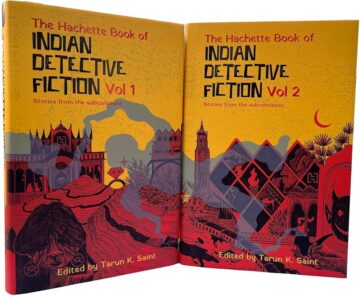
To this genre, Indian writers bring a depth of cultural context, making the genre more about societal constructs of crime, power, and inequalities of caste, gender, and so on than about a straightforward resolution of a problem. In order to archive the diversity of this form in India, literary critic and translator Tarun K Saint has produced a two volume anthology titled The Hachette Book of Indian Detective Fiction which brings together writing both in English and in translation (from Tamil and Bengali).
More here .
- Log in/Log out (Opens in new window)
- All content
- Rural Alaska
- Crime & Courts
- Alaska Legislature
- ADN Politics Podcast
- National Opinions
- Letters to the Editor
- Nation/World
- Film and TV
- Outdoors/Adventure
- High School Sports
- UAA Athletics
- National Sports
- Food and Drink
- Visual Stories
- Alaska Journal of Commerce (Opens in new window)
- The Arctic Sounder
- The Bristol Bay Times
- Legal Notices (Opens in new window)
- Peak 2 Peak Events (Opens in new window)
- Educator of the Year (Opens in new window)
- Celebrating Nurses (Opens in new window)
- Top 40 Under 40 (Opens in new window)
- Alaska Spelling Bee (Opens in new window)
- Alaska Craft Brew Festival
- Best of Alaska
- Spring Career Fair (Opens in new window)
- Achievement in Business
- Youth Summit Awards
- Three Barons Renaissance Fair Giveaway
- Sully's Rising Fest Giveaway
- Teacher of the Month
- 2024 Alaska Summer Camps Guide (Opens in new window)
- 2024 Graduation (Opens in new window)
- Alaska Visitors Guide 2024 (Opens in new window)
- 2023 Best of Alaska (Opens in new window)
- Alaska Health Care (Opens in new window)
- Merry Merchant Munch (Opens in new window)
- On the Move AK (Opens in new window)
- Senior Living in Alaska (Opens in new window)
- Youth Summit Awards (Opens in new window)
- Alaska Visitors Guide
- ADN Store (Opens in new window)
- Classifieds (Opens in new window)
- Jobs (Opens in new window)
- Place an Ad (Opens in new window)
- Customer Service
- Sponsored Content
Book review: A gifted storyteller shares her early Yukon River life
“Tiny’s Stories: An Athabascan Family on the Yukon River” by Theresa “Tiny” Nellie Demientieff Devlin
“Tiny’s Stories: An Athabascan Family on the Yukon River”
By Theresa “Tiny” Nellie Demientieff Devlin. Cirque Press, 2023. 139 pages. $18
“Tiny” Devlin, born in 1945 in Nenana, Alaska, was the eighth of 10 children in a family that lived in Holy Cross and Fairbanks and ran freight barges up and down the Yukon and Tanana Rivers. It was, Tiny writes, “a rather unusual occupation in those early days for Alaska Natives, but Dad was a determined man.” With a mixed heritage of Athabascan, Yupik, Russian, and German, Tiny grew up within her family’s Athabascan culture in a time when Native values were not generally appreciated. She died in 2020.
Tiny was known to be a gifted storyteller and late in life compiled stories from her earliest memories through her time in high school. Each short memory is rich in specific detail and shows her to have been a smart, fun-loving, and adventurous young person within a kind and loving family.
In what was surely an unusual arrangement, the entire family lived on its paddlewheel boats and barges in the summer, servicing villages that included Tanana, Ruby, Galena, Nulato, Kaltag, Shageluk, Anvik, Holy Cross, and St. Mary’s. They even traveled the Innoko River to the mining town of Flat. As Tiny writes at one point, “It amazed me, as I’m sure it did most of the people in the villages, that we all grew up to adulthood and none of us drowned.”
In her early years, the family lived in the Athabascan village of Holy Cross, which was also the location of a Catholic mission run by nuns. The mission included a huge church, gardens, a small hospital, residences for the staff, and a school for both boarding and village students; although it was uphill from the village, it seemed to dominate much of its life. Religious holidays were celebrated, and community dances featured square dancing and waltzes. In summer, most of the villagers lived at their fish camps. The Demientieff family, like everyone else, worked feverishly during the king salmon run to catch and preserve an essential food.
For a child, life on the riverboat sounds idyllic. “After a busy visit to one of the villages, I liked to stand in front of the pilothouse and watch as we pulled away ... Usually, friends or relatives would be standing on the riverbank, seeing us off. We would wave until we could no longer see each other. Sometimes I was glad, thinking about the next village and the people; sometimes I was sad to leave the one we were in.” Adventures included the time a bear came aboard and her sister shot it and another time when her father called the family together to watch so many geese fly up that they darkened the sky.
When Tiny was school-aged, the family moved their operation to land along the Chena River, near Fairbanks. For a reason Tiny doesn’t explain (or perhaps didn’t know) she was sent to a different school from her siblings. There were no other Natives in her class, and she was lonely. Two of her highlights from this time were skating on the river and helping a brother feed his sled dogs (and sneaking hot pieces of fish for herself.) And there were so many new things in the city — bakeries, movies, a store that sold chameleons!
As she got older, Tiny became more aware of how she was perceived in the world. Once, in one of the villages, she was taunted with cries of “You’re not Native!” and began to wonder why other children would say that to her. “What is it that makes a person Native? I realized then that we didn’t speak our Native language and I wondered why.”
When she was seven, her parents put some of the children in the mission boarding school for about three weeks, the first time they’d ever been separated from the family. The regimented life was very different from family life, and Tiny was homesick — and concerned for her “little buddies and the rest of the mission kids” who did not have homes to return to.
The Holy Cross Mission closed in 1956, and the staff and students were transferred to the Copper Valley School, a new, integrated, Catholic boarding school (which operated only until 1971.) Starting in seventh grade, Tiny spent six years there. Aside from having blackboard erasers thrown at her and being told by a nun of her goal to “break my spirit,” Tiny found the school a happy place, “a source of strength, the beginning of long friendships, and spirit as a driving force of values to pass on.”
Tiny went on to become a caring wife and mother, a friend to many, a significant leader, and a revered elder. Her professional work centered on promoting community health and cultural revitalization. She held positions as a producer and director at KAKM-TV (Anchorage’s public television station), as the leadership coordinator at UAF, and in the enrollment division of the Alaska Native Claims Settlement Act. The many traditions she drew upon are suggested by this line from a biography written by her husband and brother at her book’s end: “Tiny loved her Holy Cross King salmon strips, banana nut bread, and spicy Russian tea.”
Many people helped bring “Tiny’s Stories” to completion. The final book includes a wealth of contributed photos as well as several maps. The acknowledgments section notes, “Throughout all of this process, the circle of family and friends of ‘Tiny’s Stories’ kept growing — a whole village to raise a book.” The result is an intimate look into an Interior life shaped by family and cultural values during a little-explored period of Alaska’s history.
Nancy Lord is a Homer-based writer and former Alaska writer laureate. Her books include "Fishcamp," "Beluga Days," and "Early Warming." Her latest book is "pH: A Novel."

IMAGES
VIDEO
COMMENTS
Women Writing in India: 600 BC to the early 20th century Volume I (1991) -Susie Tharu and K Lalita. 5 point someone (2004) - Chetan Bhagat. The Emperor of all Maladies (2010) - Siddharth Mukherjee. A history and culture of the Indian people (1951) - RC Mazumdar.
आधुनिक भारत का इतिहास | Modern History in Hindi. 1. यूरोपीय कम्पनीयों का आगमन (पुर्तगाली)- With Audio Notes. 2. डच (हॉलैडवासी) ईस्ट इण्डिया कम्पनी- With Audio Notes. 3 ...
7 Best Indian History Books in Hindi में देखने वाले है। इन किताबो से आपको भारत के इतिहास के बारे में बहुत सारी जानकरी मिलाने वाली है। इसके जो लेखक है
विषय सामग्री- hide. 1 मानव उत्पति पर आधारित History Books In Hindi-. 2 प्राचीन भारत के इतिहास पर आधारित History Books In Hindi. 3 मध्यकालीन भारत के इतिहास पर आधारित History ...
हिंदी लेखिकाओं की 10 सदाबहार किताबें. हिंदी बुक रिव्यू: यहाँ पर पढ़ें हिन्दी में प्रकाशित हुये किताबों की समीक्षा., Read here hindi book reviews.
ई पुस्तकालय : ऑनलाइन पढ़े व डाउनलोड करें मुफ्त हिंदी पुस्तकें व रिव्यू | EPustakalay provides Free Hindi PDF Books, Reviews and more. Hindi Book Digital Library
The 20 best india history books recommended by The New Yorker, Mahatma Gandhi, , Airmail, Booklist, Ken Juster, Saba Naqvi and Kunal Kamra. Categories Experts Newsletter. BookAuthority; BookAuthority is the world's leading site for book recommendations, helping you discover the most recommended books on any subject. ...
इतिहास / History श्रेणी की पुस्तकें : पढ़ें, रिव्यू करें व डाउनलोड करें | इतिहास / History Books Read Online, Review and Download | इतिहास / History Hindi and Marathi Books PDF
Get Textbooks on Google Play. Rent and save from the world's largest eBookstore. Read, highlight, and take notes, across web, tablet, and phone.
3 min read. The Greatest Hindi Stories Ever Told, selected and translated by Poonam Saxena, definitively makes good on its boast. This collection is a labour of love from Saxena, who confesses ...
The Book Review, India's first review journal in English, was started in 1976 by Chitra Narayanan, Uma Iyengar and Chandra Chari . It provides critical, in-depth reviews of books published in India and abroad on a variety of subjects — social sciences, humanities, fiction, management, environment, art, culture, science and children's literature thus rendering a signal service to book ...
Sharing my review for Yuval Noah Harari's Sapiens. What I liked & Disliked.Get it here : https://amzn.to/37OzZLiPlease like & share this video and subscribe ...
[GIVEAWAY CLOSED]What makes us human beings unique? What do we have that even animals have, yet it is so special about us? And why is it important (and fun) ...
The Indian Historical Review is a peer reviewed journal, addresses research interest in all areas of historical studies, ranging from early times to contemporary history. While its focus is on the Indian subcontinent, it has carried historical writings on … | View full journal description. This journal is a member of the Committee on ...
Buy Read Extract. Or buy from your local bookseller. 6 Crore Ka Murda by Surender Mohan Pathak. We bring out the best of Surender Mohan Pathak in a five-book box set for the fans of the undisputed king of crime fiction. Painsath Laakh Ki Dakaiti, 6 Crore Ka Murda, Jauhar Jwala, Hazaar Haath and Daman Chakra are….
ncert-history-hindi Identifier-ark ark:/13960/t28b08t7q Ocr language not currently OCRable ... Scanner Internet Archive HTML5 Uploader 1.6.4 . plus-circle Add Review. comment. Reviews There are no reviews yet. Be the first one to write a review. 1,830 Views . 8 Favorites. DOWNLOAD OPTIONS ... Hindi : Books by Language Books by Language ...
2,500 Years of Indian History in One Book. Amrita Sher-Gil, "Self-Portrait in Green," 1932. Private collection, reproduced courtesy of Vivan and Navina Sundaram. When you purchase an ...
Godan Book Review In Hindi - हेल्लो फ्रेंड्स , आज के इस लेख में हम मुंशी प्रेमचंद जी की सर्वोतम कृति माना जाने वाला उपन्यास गोदान की समीक्षा करेंगे !यह एक कृषि और भारतीय ...
Books on Indian History - non-fiction only, please. flag ... The Wonder That Was India: A Survey of the History and Culture of the Indian Sub-Continent from the Coming of the Muslims to the British Conquest 1200-1700 Volume-2. by. S.A.A. Rizvi. 3.76 avg rating — 155 ratings.
2006 में पहली बार छपी इस किताब की 3 करोड़ से ज्यादा प्रतियां बिकी चुकी हैं और यह ...
Modern Indian History UPSC Civil Services Exam | Modern Indian History Hindi Book (Hindi 1st Edition) for State PCS Exams 2023 By StudyIQ Publications [Unknown Binding] StudyIQ Publications. ... Customer Review. 4 Stars & Up & Up; 3 Stars & Up & Up; 2 Stars & Up & Up; 1 Star & Up & Up; Price. Under ₹100
Book review Imagesource: Amazon. And the book takes you exactly there, through the years of changes in our country. The stories take you through the lives of various individuals, from the smallest towns in the country to the metro cities. Most characters in the story would remind you of someone you already know and leave you with a heavy feeling.
Hindi Edition | by Ramchandra Guha and Shushant Jha | 24 May 2012. 1,509. Paperback. ₹331. M.R.P: ₹499. (34% off) FREE delivery Sat, 24 Feb on ₹499 of items fulfilled by Amazon. Or fastest delivery Tomorrow, 23 Feb. Kindle Edition.
The Hindi title simply translates to a fascinating story, and it indeed is. Srinivasan, who is a serving officer in the Indian army, has served up a perfect medley of greed and schemes, topped ...
Edited and republished with permission. This book covers periods from the 9th century to the 1940s, throwing light on a number of themes. In its first part, the book highlights the early influence of Islamic civilisation, the early Muslim discovery of Australia as well as some early practices evocative of Islam among the Aborigines.
The reviewer is a senior journalist who has reported from Washington DC on North America and United Nations. Check out the book on Amazon here. New Cold Wars. Author: David E. Sanger. Published by ...
Reviewed: They Flew: A History of the Impossible. by Carlos M.N. Eire. Yale University Press, 492 pp., $35.00. Have you ever bitten into a piece of fruit so delicious, so ripe and perfect in its flavor and sweetness, that you vibrated, just a little, with pleasure? The Franciscan beggar Salvador de Orta did.
Over the course of the 36 essays in Rachel Cohen's book about the serendipitous encounters of novelists, painters, poets and photographers, spanning the Civil War period to the civil-rights era ...
In order to archive the diversity of this form in India, literary critic and translator Tarun K Saint has produced a two volume anthology titled The Hachette Book of Indian Detective Fiction which brings together writing both in English and in translation (from Tamil and Bengali). More here. Psychology and neuroscience crack open AI large ...
Cirque Press, 2023. 139 pages. $18. "Tiny" Devlin, born in 1945 in Nenana, Alaska, was the eighth of 10 children in a family that lived in Holy Cross and Fairbanks and ran freight barges up ...